THE BEST OF WINES, THE WORST OF WINES
RICHARD CALVER


IT’S TIME TO GET GARLIC GROWING
JACKIE WARBURTON




When Andrew Barr takes the ACT cash cow to market KEEPING UP THE ACT


THE BEST OF WINES, THE WORST OF WINES
RICHARD CALVER


IT’S TIME TO GET GARLIC GROWING
JACKIE WARBURTON




When Andrew Barr takes the ACT cash cow to market KEEPING UP THE ACT


Elm Grove Estate offers the largest lots at the lowest prices within 30mins of Canberra’s CBD.
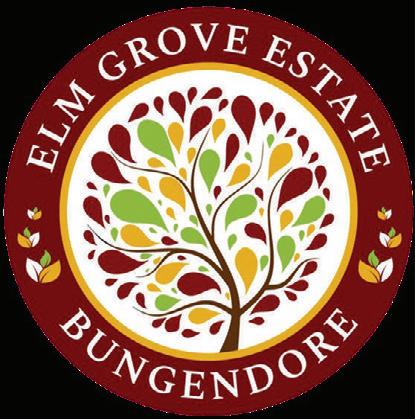

With super-sized lots ranging from 850sqm to a whopping 1,500sqm we can help you find the perfect block of land to build your new dream home. Our fully serviced lots include: Town water | Town sewer | Underground power | Natural Gas | NBN
Other benefits include:
- A choice of easy-to-build on level lots as well as elevated lots with views
- Freehold Land (no time limit to build)
For plans and prices email land@corporation.com.au or call 6238 0111 Website: elmgroveestate.com.au

OPEN FOR INSPECTION SUNDAY 12pm to 4pm Follow the signs from Birchfield Drive, Bungendore (off Tarago Road)
Stage 2a Lot 3 $1,179,000
Home design: Custom 26
Lot size: 987 sqm
House size: 261 sqm
Bedrooms: 4

Bathrooms: 2.5
Garage: 2
Contact: 0477 999686
Major Financial has access to Australia’s most trusted lending institutions and will help guide you through the entire lending process from initial discussion through to the settlement of your property.

The highly experienced team led by Jewels Major will ensure that the home loan process will run smoothly while taking into consideration the best lender and interest rates for your personal or business needs.

Whether you are buying your first home, upsizing to a bigger family home or securing your future with an investment property, call Major Financial to own your new dream home sooner!
Call Jewels Major on 0475 852077 or email: jewels@majorfinancial.com.au

Stage 2a Lot 47 $1,278,000
Home design: Grove 47

Lot size: 1,032 sqm
House size: 251 sqm

Bedrooms: 5
Bathrooms: 2.5
Garage: 2
Contact: 0402 222062








Stage 1 Lot 44 $1,227,000
Home design: The Lewis
Lot size: 1,139 sqm
House size: 260 sqm
Bedrooms: 5
Bathrooms: 2
Garage: 2
Contact: 6297 1017
Stage 2a Lot 110 $1,180,900
Home design: Lotus
Lot size: 850 sqm
House size: 240 sqm
Bedrooms: 4
Bathrooms: 2
Garage: 2
Contact: 6112 8891
Stage 1 Lot 48 $P.O.A
Home design: Washington
Lot size: 933 sqm
House size: 295-307 sqm


Bedrooms: Choice of 3 or 4
Bathrooms: 2
Garage: 2
Contact: 0428 293606


Home design: Onyx Junior
Lot size: 851 sqm
House size: 202 sqm
Bedrooms: 4
Bathrooms: 2
Garage: 2
Contact: 6109 7770
Stage 2a Lot 76 $1,099,990
Home design: Newgate 25

Lot size: 873 sqm
House size: 230 sqm

Bedrooms: 4
Bathrooms: 2.5
Garage: 2
Contact: 0420 360211
Stage 2a Lot 6 $1,395,000
Home design: Pulse 31
Lot size: 925 sqm
House size: 310 sqm
Bedrooms: 5
Bathrooms: 3.5
Garage: 2 Contact: 1300 552240






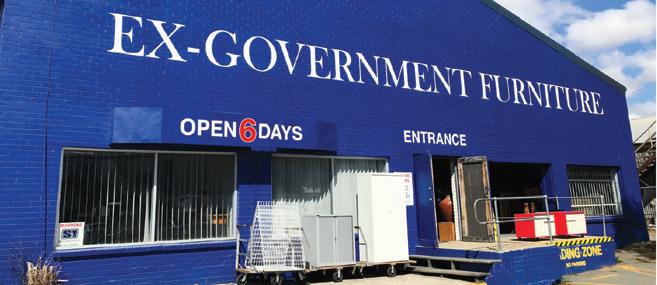


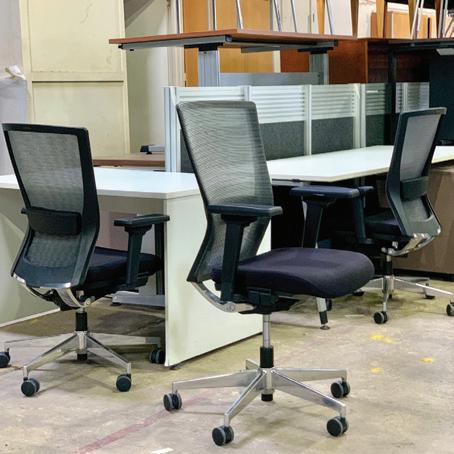

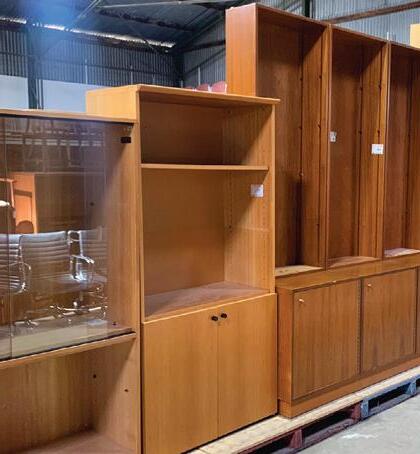


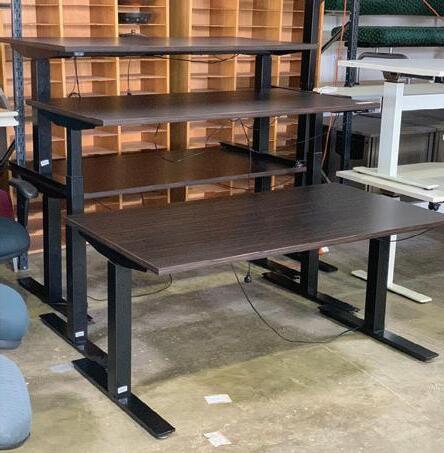
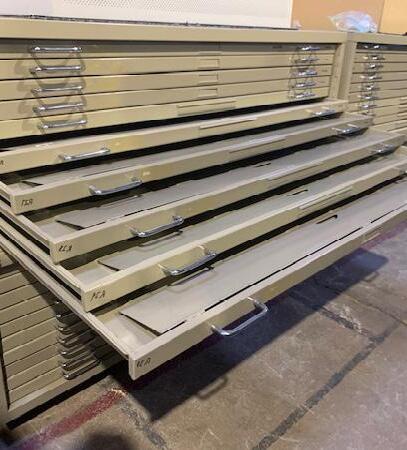

SINCE Lids4Kids began in June, 2019, more than 98 million plastic lids have been saved from ending up in landfill.
In the last two months, founder Tim Miller says Lids4Kids has found itself a permanent home in Fyshwick between Powerkart Raceway and the Fresh Food Markets, and in the last 12 months, Lids4Kids has become a national charity.

“The sad thing is that there’s not a living organism left on the planet that doesn’t have microplastic inside it,” says Tim, 46, of Aranda.
“In every other state we’ve been able to pair our collectors up with a lo cal plastic recycling facility and they process it into something.
“Every state’s different. In some they’re making landscaping sup plies like paving bricks and railway sleepers, in others they’re making playground equipment and outdoor furniture.
“The ACT is the only jurisdiction where we don’t have a plastic manufacturer or recycler, so the thing I’m most proud of is that we’ve now closed the loop in the ACT. By making benches
Tim says Lids4Kids wants to show schools in particular, and workplaces, that once 15,000 lids are collected, that equals one bench.
“We don’t paint them or dye the plastic, each one of those slabs in the rainbow bench is that coloured plastic. It also shows people that all
over 100 years,” he says.
“And, once they’re finished with it, it can be recycled again.”

Tim says the University of Newcastle put out a scary statistic four years ago.
“Each of us ingest enough microplastic through food, water and air to equal a credit card every single
Since 1993: Volume 29, Number: 18
General manager: Tracey Avery, 0477 939999

Senior advertising account executive: David Cusack, 0435 380656
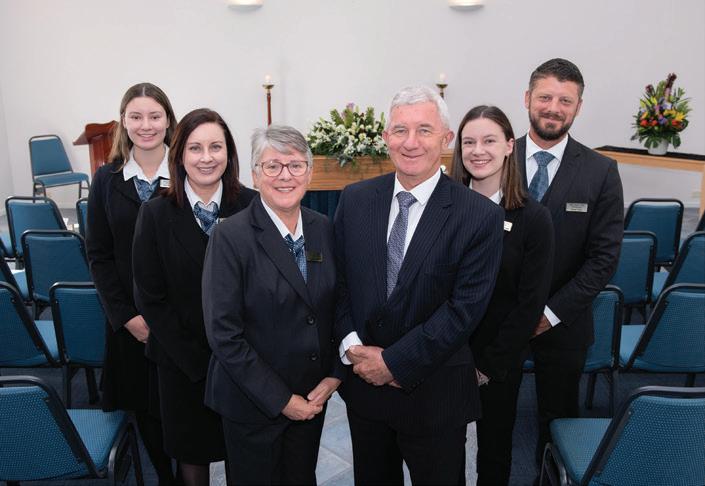
Advertising account executives: Damien Klemke, 0439 139001
Tim Spare, 0423 381691
Editor: Ian Meikle, editor@citynews.com.au
Journalist: Lily Pass, lily@citynews.com.au
Arts editor: Helen Musa, helen@citynews.com.au
Production manager: Janet Ewen
Graphic Designer: Mona Ismail

Proof reader: Glenda Anderson
Distribution manager: Penny McCarroll penny@citynews.com.au
“And, did you know nothing smaller than a credit card gets recycled?”
To help make a difference, Lids4Kids has zero-waste buckets for people to use in offices, homes or schools, to collect anything smaller than a
“On top of soft drink and milk bottle lids, we now can use aluminium foil, metal wine caps, beer tops, blister packs for tablets and mobile phones, batteries and cords,” he says.
The most recent project for Tim makes use of another plastic item, the only one Lids4Kids can’t process.
“The squeezy yoghurt pouch lids, they are round so when we put them in our shredder it just ping-pongs around

Fortunately, the Lions Club of Canberra City donated a van to Lids4Kids, just in time for the Hands Across Can-
“The first $5000 each individual charity raised got matched by a corpo -
“Each charity was encouraged to fundraise in a cool, unusual or quirky way.
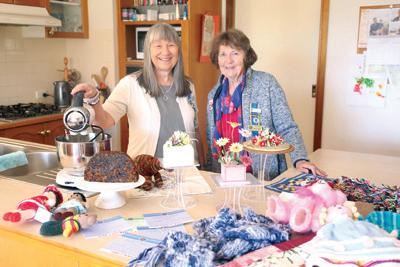
“So, we decided to use our van, and for every dollar donated to Lids4Kids we would put a squeezy lid on the van.
“It will take 20,000 lids to cover the whole van. Through Hands Across Canberra we put 4000 lids on it, and it took me 102 hours. Very generously, Selleys donated 100 tubes of liquid
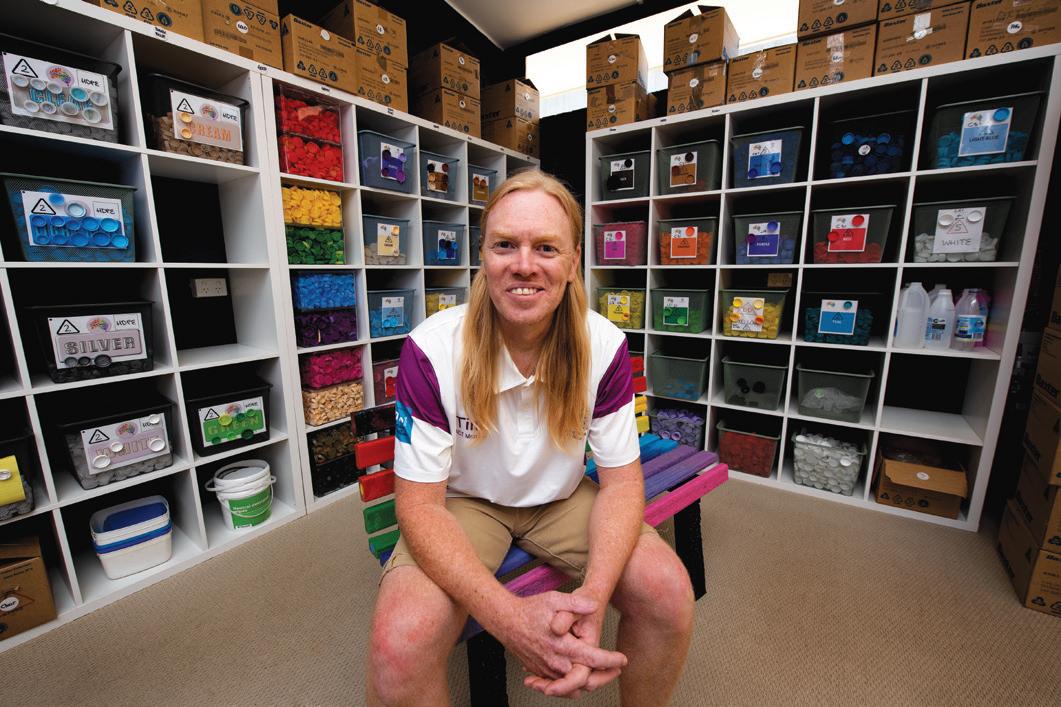
nails to glue the lids on.”
Tim admits he’s colourblind, and had to get his three sons to colour-sort the lids.
“We started off with a rainbow on the front of the van,” he says.
“I’m a bogan, and I’ve got my motorsport team, so I wanted flames going up the side.
“On the other side we’re going to do a big picture of Earth, and then on the roof we’re going to do a big whale shark.”
He says now, with the van part-way decorated, he can’t drive 100 metres down the road without people waving.
“It’s raised awareness for us, that nothing smaller than a credit card can be recycled, which is great,” he says.
“I suffer from chronic pain and I’m quite unwell from several incurable conditions including Crohn’s disease and fibromyalgia.
“Yet, I think by doing good, you feel good so whatever endorphins I get from doing good are definitely helping me.
“I’m pretty happy and I’m more than comfortable now that I’ve got Emma as CEO. Lids4Kids is a solid thing. That legacy is there and it’ll keep going after I’m gone. That’s all I wanted.”
To volunteer or donate, “just walk in” at 141 Canberra Avenue, Fyshwick, between 10am and 2pm, or visit lids4kids.org.au
THIS ACT Greenslabor government has the expertise to distract people about what they are really up to when they release one of their contentious planning documents.
They did this very well at the end of March with the release of their “East Lake Place Plan”.
What most people heard was that the redevelopment was about vibrant and exciting upgrades to the railway station, the landfill areas being converted for recreation and an innovation business hub on Mildura Street (near the markets).

This was followed with comments from the usuals about how excited they were about this initiative. That’s the work of the government media section doing their thing.
Among the self praise was the killer from Planning Minister Mick Gentleman. He wants to urgently convert the Causeway social housing into a mixed-use precinct that should include more housing options. Think the rest of Kingston Foreshore, being up to eight storeys of apartments, and you get the picture.
This “East Lake Place Plan” announcement is about money. This is about selling off the Causeway homes and to generate more contributions to the tram.
to afford them. And everyone will be happy – except those who thought that the Causeway was their home and their place.
As for the other stuff around the railway and the transport hub, not much will happen there until there are profits for developers. Meanwhile, the 41 Causeway households need to get serious as the signs are that this clearance may happen soon.
This despite more than a decade of on and off consultations about how the residents will be looked after. In 2009, the ACT Greens stated that the community should be kept together –in the Causeway.
That commitment will join Yvette
estate developments to include 15 per cent social housing. Within the inner north and inner south, that commitment lasted until the developers submitted that the social housing requirement threatened their profits. Bingo! No social housing returned to those major sites. It is about money –not respect for residents.
At the April Inner South Canberra Community Council meeting there was a commitment from ministers Rebecca Vassarotti and Rachel Stephen-Smith for housing priority. Translate that vague commitment to be that the residents will be moved out and will be housed in units (not houses) somewhere in Woden or
maybe Weston Creek.

The government succeeded in breaking up communities along Northbourne Avenue and across the inner south. It will be easy for them to scatter the 41 Causeway households. That’s how Berry and Vassarotti earn their money. By talking in spin and not upsetting the chief minister’s plans to sell off and transfer housing monies over to the tram.
The Causeway residents have done a great job of working with the consultations, whenever they happen. The last contact being in August 2021.
The 2023 Place Plan has unsettled residents. The warnings have been there with maintenance now at a minimum. Why look after homes when you know the bulldozers have already been booked?
There’s huge support for the Causeway residents especially among the inner-south residents. Meanwhile, stand by for more gaslighting and statements to justify this harsh treatment of the Causeway residents. The Housing ACT clearance machine will justify its actions through its communications section, who get articles placed in the media to divert from what they are really up to.
As the residents are saying to anyone who will listen, why not just build around them and leave the community in place. That would be too easy and too humane for this Greenslabor government.
The other unknown is what fate awaits the heritage-listed Causeway Hall. Given the chief minister’s dubious attitude towards heritage, anything is possible. Are there any politicians prepared to stand with the Causeway residents on these issues?
Paul Costigan is a commentator on cultural and urban matters.
There are more of his columns at citynews.com.au

The government succeeded in breaking up communities along Northbourne Avenue and across the inner south. It will be easy for them to scatter the 41 Causeway households.

ME/CFS and other fatiguing illnesses are very poorly understood, hard to diagnose, and even harder to live with disease.
ME/CFS has been known of for decades now, there is even evidence of historical figures including Florence Nightingale having lived with this condition. Long COVID is of course a very recent disease with a very unknown pathway. It doesn’t matter what your debilitating fatiguing condition is, the effect on the person living with it is devastating.
Whilst there is a clinic at the UC hospital that may assist some living with Long COVID, there are no dedicated health services other ME/CFS ACT, a part of Arthritis, Pain Support and ME/CFS ACT, to assist people living with the multitude of long term, devastating fatiguing illnesses.
We offer many services including self-help programs, programs to help you link up with others who are in a similar situation as you, as well as a full suite of Allied Health supports for those of you who need assistance.
We also have a program for teens and young adults who are living with fatiguing illnesses and a parallel program for their carers. We offer many of our services online for those that cannot leave the home, we have practitioners that can visit you at home, and if you are feeling good,we have programs at both our Bruce and Pearce offices that you can attend.
If you are living with ME/CFS or other fatiguing illness, struggling to get a diagnosis, are a carer or friend of someone with a fatiguing illness, or would just like to know more about what we do, or speak to one of our peer support workers or Allied Health staff, call us, email us, or drop in and say hello.
Living with or supporting someone with ME/ CFS is hard. We are there to help. Likewise if you are someone who would like to financially support the work that supports people living with fatiguing illness, please also call us on 6251 2055 to help us continue this work.
(Myalgic Encephalomyelitis / Chronic Fatigue Syndrome)
To mark International ME/CFS Day on 12 May - Arthritis, Pain Support & ME/CFS ACT are holding a symposium on living better with debilitating fatigue and chronic pain.
Topics will include:
• How to apply for the National Disability Insurance Scheme (NDIS)
• Where to find energy saving devices to make life more comfortable
• National ME/CFS Day program from Emerge Australia
• Stories from people living with ME/CFS and what helps to bring them joy
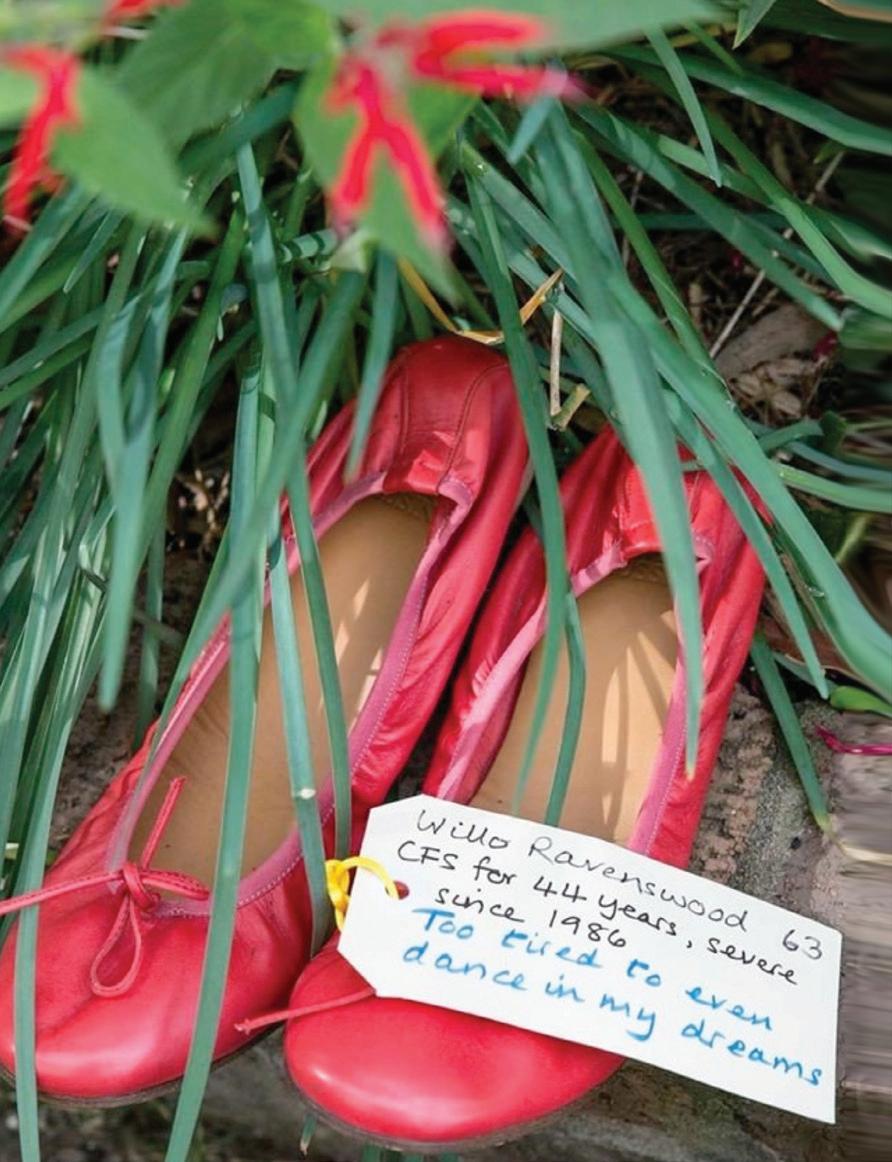
This program will run for 6 weeks with one hour sessions 2-3 days a week, hopefully helping you to conserve your energy whilst also receiving some great information to help improve your life!
We welcome all members of the ACT to join us free of charge for these events.
All presentations will be held on Zoom and details of the exact program can be gained by contacting Arthritis, Pain Support & ME/CFS ACT on 1800 011 041 or by emailing info@arthritisact.org.au
In Australia hundreds of thousands of people disappear from their lives due to Myalgic Encephalomyelitis/CFS and other debilitating fatiguing illnesses including Long COVID
A CENTURY on from its formation, the Country Women’s Association (CWA) Queanbeyan Evening Branch remains just as relevant to the local community as it did in 1923.
Well known for its advocacy of rural women’s issues and extensive fund raising activities, the CWA continues to be an important voice in communi ties such as Queanbeyan.

As it celebrates its centenary this year, Queanbeyan Evening Branch members are reminiscing upon the association’s long history of commit ment to the community.
Branch stalwart Fern MacLachlan, 83, joined the CWA over a quarter of a century ago, largely for the friendship that the association provided.
“I was new to Burra at the time, so I joined to get to know other rural women,” MacLachlan said.

“It’s the friendship and the networking that I love the most because you meet people from everywhere.”
The CWA of NSW celebrated its centenary last year having been formed in 1922. The Queanbeyan branch was established the following year in
March 1923.
During its long history the Queanbeyan CWA transitioned from a day branch to an evening branch where
meetings were held outside of work hours, as more women entered the workforce.
“When I first joined, I was in the day
branch but now there’s only the evening branch,” said MacLachlan.
“We have 40 or so members which really is a very good number. When the evening branch first started there were probably about a dozen members, so it has really grown and there’s a lot of younger people joining.”
While the CWA remains as important today as it did in 1923, it has also changed with the times.
Members recall turning up for meetings dressed in hats and gloves, and the meeting minutes were recorded entirely by hand.
“The women used to wear hats and gloves, stockings and matching handbags to the meetings. It was very formal,” MacLachlan said.
“And absolutely everything from the meeting was recorded by hand.”
Probably best known for its cakes and scones, the CWA’s contribution is far greater than most people realise.
As 40-year member Chris Tarlinton points out, one of the association’s most important roles was during the establishment of the former baby health centres in rural communities.
“The thing I remember the most about the CWA when I was a child was the impact of the baby health centres,” said Tarlinton, 66.
“My mum would talk a lot about them and how much they helped mothers and their babies; they were a big thing back then.
“The CWA has been instrumental in helping to establish many things like the cat eyes and white lines on the side of the road, and seat belts on school buses. Particularly in country areas we have been able to improve a lot of things.”
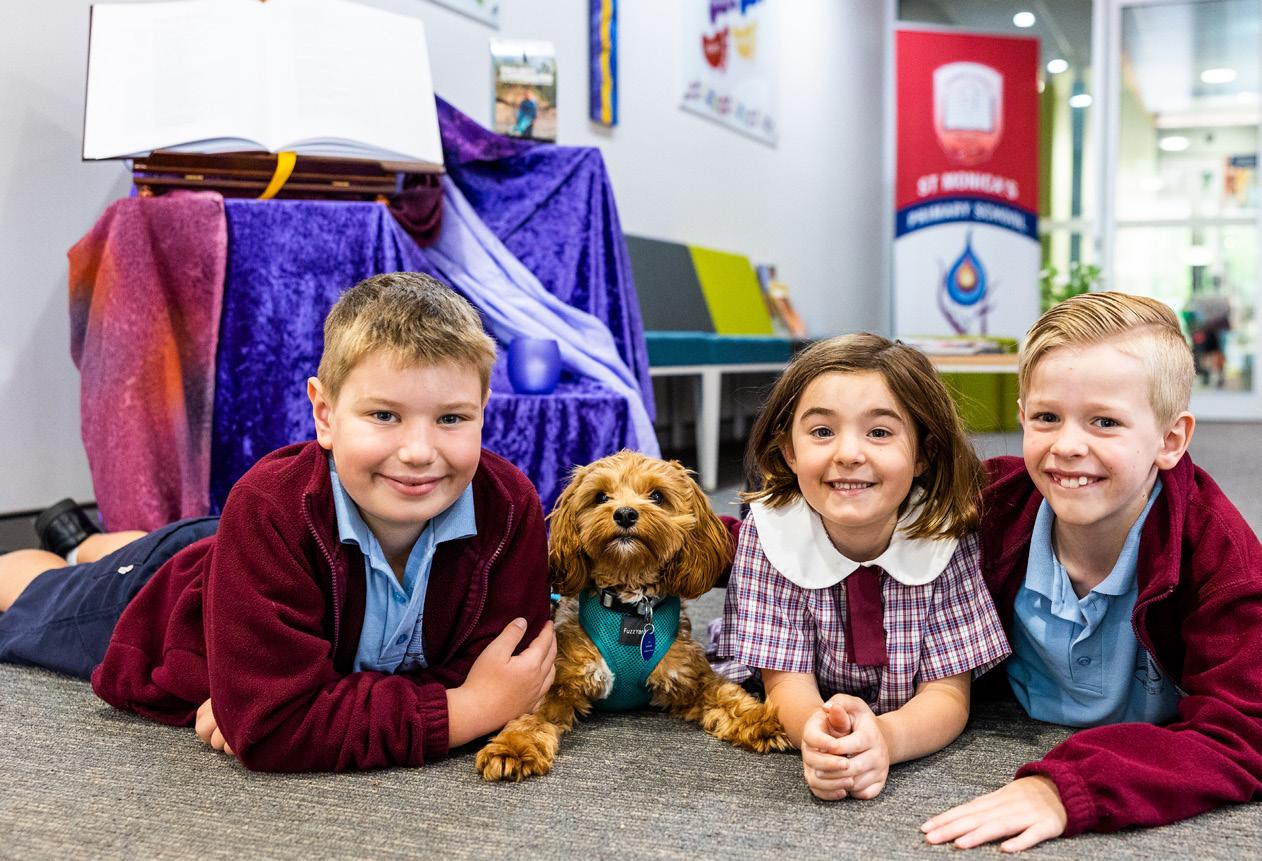
MacLachlan remembers a wartime CWA where women sewed sheepskin vests for fighter pilots and camouflage nets for troops.
“During World War II a lot of the ladies in the Queanbeyan branch made sheepskin vests for the pilots, because the planes weren’t air conditioned or anything,” said MacLachlan.
“A lot of the camouflage nets were also made here in Queanbeyan by the ladies and sent overseas to the troops.
“A funny thing about the sheepskin vests was that the German pilots thought they were bullet proof, and they were frightened of the Australian pilots in these vests.”
While many organisations struggle to attract younger members, the Queanbeyan CWA is not one of them, having a strong interest from young women in the local community wanting to join their ranks.
“More and more young people are getting involved, and we are going down different avenues now like having virtual meetings and electronic record keeping,” said Tarlinton.
“Making it to 100 is an incredible achievement. We have a bright future ahead.”

Be part of a welcoming, supportive, connected community that supports your child to reach their potential A place of faith, learning and opportunity that provides education opportunities for all
17
St John Paul II College (JPC) is a welcoming and inclusive learning community where diversity is embraced and learning outcomes are maximised for each individual. The college is a flagship in education and provides a unique, innovative educational environment where all students can flourish. The college’s core principles of Justice, Peace and Courage support the holistic development of students as they navigate an ever changing world.
We invite students and their families in years 9 to 12 to attend the JPC Senior College Expo
Schedule:
4.30 – 7.00 pm: Expo and faculty information
4.30 – 4.50 pm: Australian School Based Apprenticeship Information Session
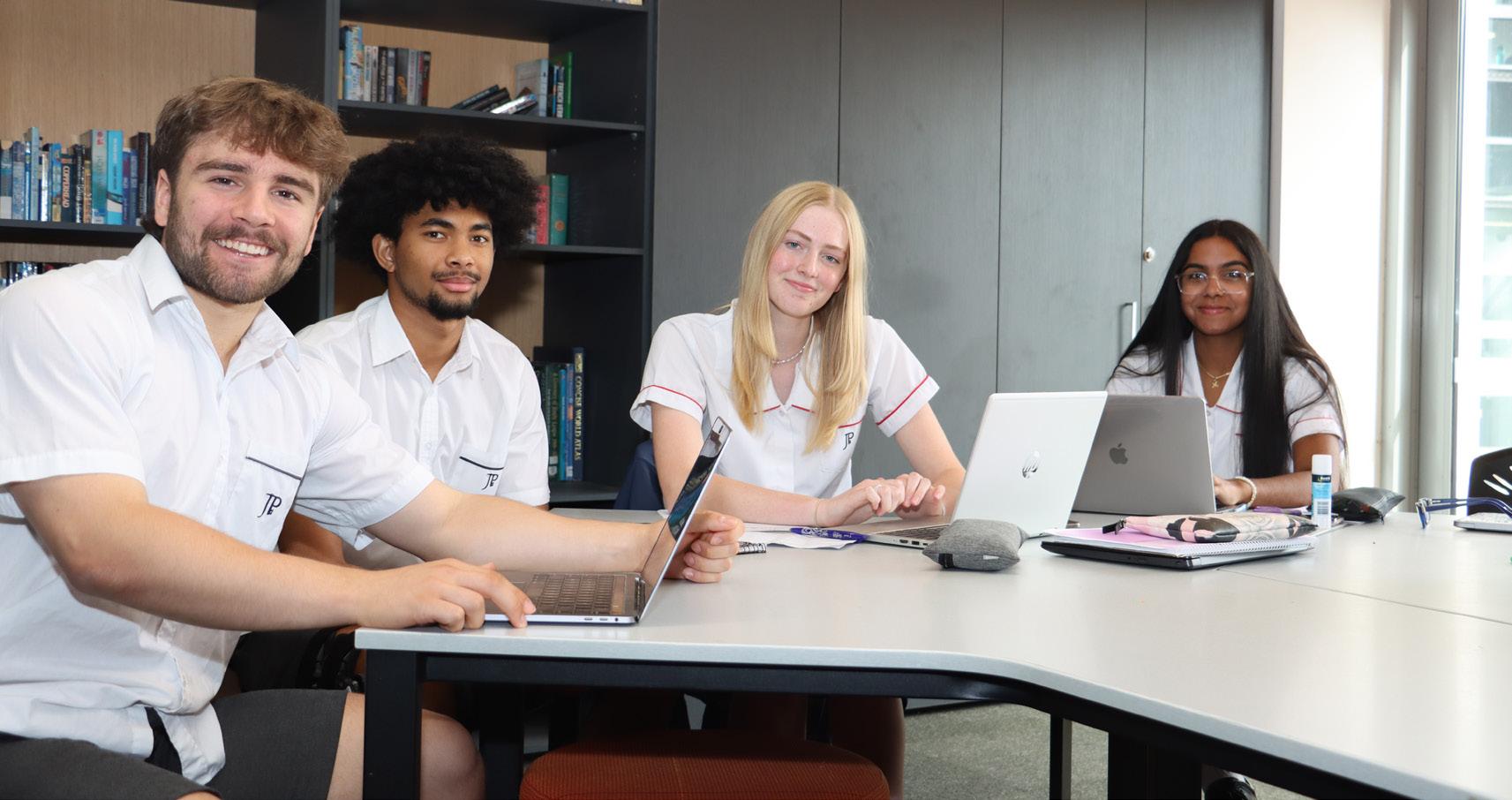
5:30 – 6: 15 pm: Principal Welcome and Panel discussion
7:00 pm: Close
During the evening, students and families will have the opportunity to:
• explore the ‘Careers Expo’ where Universities and Training Organisations will be showcasing their courses - see website for complete list of exhibitors
• discover JPCs student leadership and co-curricular opportunities
• meet with teachers and discuss information about senior subjects that JPC is offering for 2024 and beyond. Tours will be available during the evening for families new to JPC . Or book a small group tour during the month of May. For more information and bookings visit our website www.jpc.act.edu.au
Be active… Be creative… Be inspired…
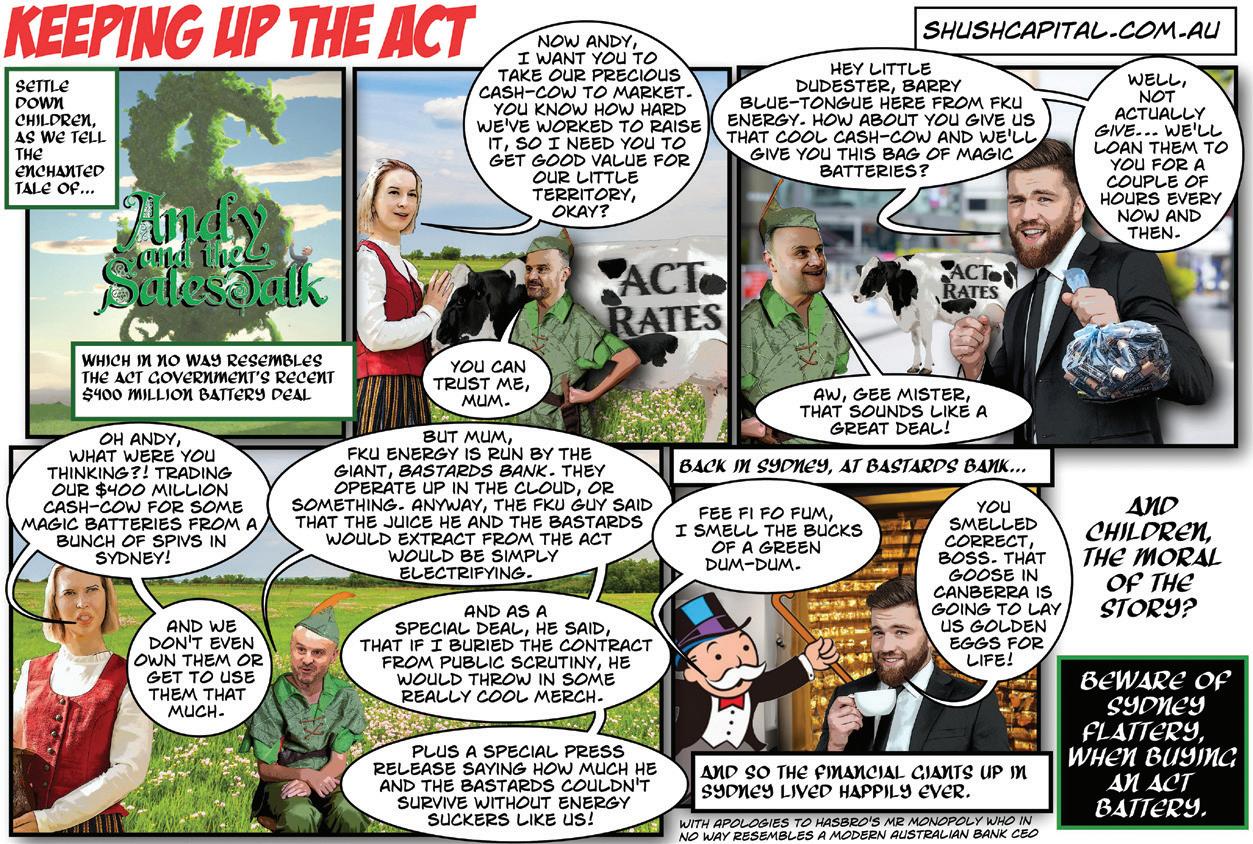
PROF Anthony Maher will present the inaugural “Wisdom for the Common Good” talk on the subject of “The State of the Church: Back to the Future” at the Australian Centre for Christianity and Culture, Barton, from 6pm, May 11. The talk is aimed at anyone interested in the state of the church today and its place in Australian society in the future.
SHARE the Dignity is holding a high tea to raise funds and awareness around the realities of “period poverty” in Australia. The DigniTea event, at Rydges Canberra, 12.30pm-3.30pm on May 21, is in recognition of World Menstrual Hygiene Day on May 28. Tickets are $99 or $950 for a table of 10. Book at sharethedignity.org.au
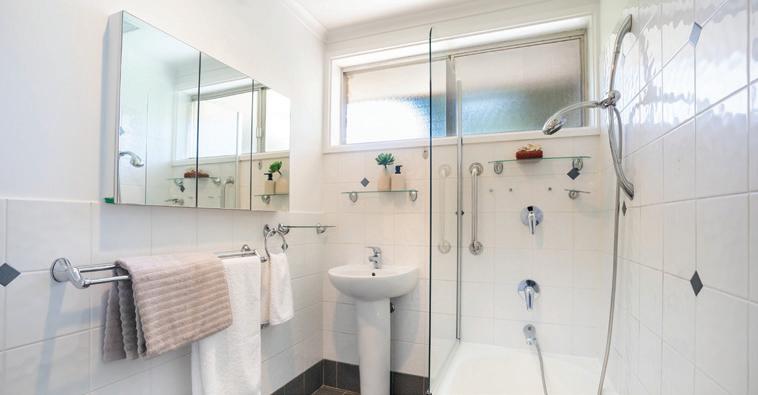

TOM Flynn from the MD Foundation will talk about macular degeneration at the next meeting of the Narrabundah Probus Club at the Harmonie German Club, from 11am, on May 9.
ST Ninian’s, at Lyneham, is holding a sale of secondhand books, including fiction and non-fiction, cookery, gardening, manuals, children’s, magazines and more in the church hall, 9am-1pm, May 12-13.

CPAP Direct, Australia’s largest independent provider of sleep apnea equipment has arrived in Canberra with the opening of a large shop in Townshend Street, Phillip.

“Stocked with a vast range of sleep apnea and CPAP (continuous positive airway pressure) technology, CPAP Direct offers personalised service and care including how to have an in home sleep study, CPAP machine hire and sales, travel CPAP and batteries and all of the advice and after sale support needed,” says owner Bryce Perron.
“Apnea means ‘without breath’ so sleep apnea is the stopping of breathing while someone is asleep.
“The person typically will not be aware of it happening, but as the muscles around the throat relax when someone is asleep, this can lead to snoring.
“However with sleep apnea, the airway closes completely which starves the brain of oxygen. Your body’s natural survival instincts pull you out of a deep sleep to a lighter sleep where the muscles can re-engage and you take a breath. Then you go back into a deeper sleep and the cycle repeats over and over again throughout
the night. Our brand ambassador and cricket legend Merv Hughes stopped breathing 76 times per hour during his sleep study.
Bryce, who was diagnosed with sleep apnea more than 10 years ago, says there are many health and lifestyle implications of sleep apnea such as brain fog, fatigue and increased risk of serious illnesses such as diabetes, heart attack and stroke.
“For me, it was the fatigue and brain fog that I experienced, being in a constant cycle of bad quality sleep, I was wrecked!” he says.
Once Bryce received treatment in the form of a CPAP machine, his snoring stopped completely, he was able to achieve good quality sleep and he felt energised like never before.
Bryce says that he and his wife were motivated to buy their local CPAP Direct store on the Sunshine Coast in 2014 to help make a difference in people’s lives.
“We quickly realised that our competitors were not in touch with the patient experience and that we could do so much more to help,” he says.
“Having sleep apnea myself, I was able to give my first-hand experience of using the masks and machines.
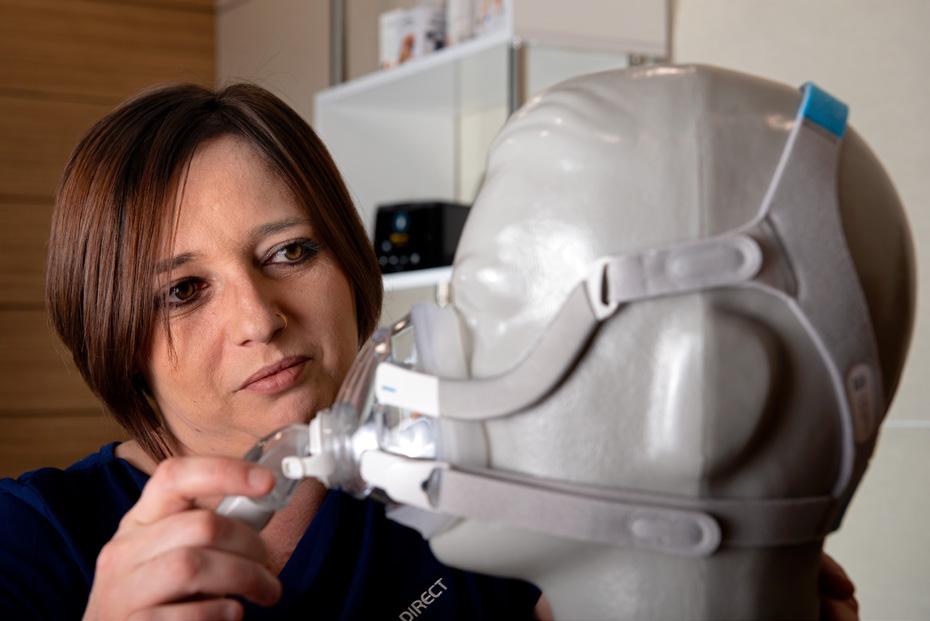
“We want to make it a positive experience. People come to see us feeling
grumpy, tired and their partners are about to send them to sleep in the spare room. It’s so rewarding when their quality of life and their relationships are improved!”
Now with 110 employees, 23 stores across Australia and a large partner network, Bryce says he is excited to open in Canberra which is operated by Taylaar and Marc who bring years of industry experience.
“We pride ourselves on being a family run, independent business. We provide excellent customer service, a price-match promise and we genuinely care about the results,” says Bryce.
Bryce says that CPAP Direct will work with people’s physicians to provide a sleep study, with independently analysed results and then find the right treatment and equipment for them.
Bryce says that Taylaar, Marc and the Canberra team are here to help: “If you or your partner feel like you may be affected by snoring or fatigue and want to know more, come and have a chat with us. Or if you already have a CPAP machine but you feel it’s not working as well, come and see our range of latest technology machines.”
CPAP Direct Canberra, Shop 3 & 4, 42 Townshend Street, Phillip. Call 6189 1256 or visit cpap.com.au
‘Having sleep apnea myself, I was able to give my first-hand experience of using the masks and machines.’Store manager Taylaar fits a CPAP mask… “We quickly realised that our competitors were not in touch with the patient experience and that we could do so much more to help,” says owner Bryce Perron.

Almost 300 allegations of corruption were lodged with the ACT Integrity Commission in the two years between July 2020 and the end of June 2022.
Last year 80 per cent of these allegations were dismissed and close to 20 per cent considered by the commission.
There have been three special reports published since the Integrity Commission was established in December 2019.
On December 2 of that year the first allega tion was received and seven months later there had been another 76. Over this period just three full reports were published compared to 365 allegations.
SALE 10% - 50% OFF

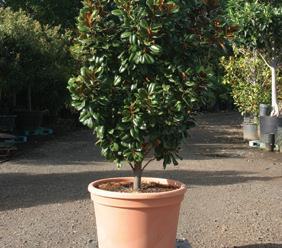
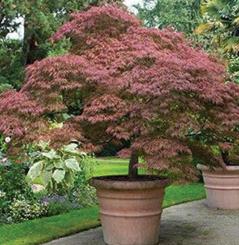
As I pointed out in this column in October last year, “Operation Raven”, a “Special Report into the Sale of Block 30, Section 34, Dickson” found no corruption. The Integrity Commission determined to discontinue the investigation arguing “the commission is satisfied that the legal threshold for investigation was not met”.
At the same time, I highlighted a similar story with regard to “Operation Lyrebird” regarding a land deal in Glebe Park. The report concluded “the evidence does not provide grounds for a reasonable suspicion… that would suggest any official acted corruptly in connection with the acquisition of Block 24”.
The third report also dismissed accusations of corruption and discontinued its investigation into the Suburban Land Agency. The issue being investigated was the sale of land in Throsby. Although no specific corruption was found, the Suburban Land Agency was reported as taking advice from the Integrity Commissioner regarding preventive measures.
SALE INCLUDES OUR FULL RANGE OF GARDEN FURNITURE
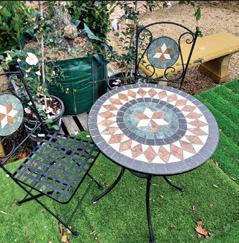
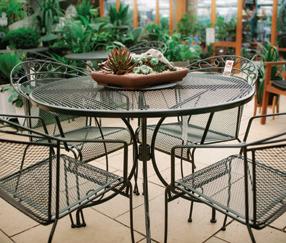
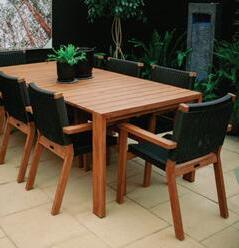
Adams KC, told an ACT Estimates Committee in November last year: “I am acutely conscious that a lack of public output, and in particular an absence of findings of corrupt conduct, may be perceived in the community as a lack of effectiveness of the commission”.
He explained the importance of prevention, but added “the perception fails to recognise both the scale and complexity of the investigative process likely to be involved in adequately considering what is always a serious matter where corruption is an issue”.
These measures included confirming “the suitability of the process for its intended purpose” in order to ensure a sound and robust system. Finally, the Suburban Land Agency would identify “any further adjustments, controls or risk mitigants which could be adopted in future to ensure that the kinds of problems which have been identified do not occur”.
ACT Integrity Commission.
The Integrity Commission has a key role in preventing corruption. In each report the commission identified systemic weaknesses, although they did not specifically identify any direct corruption on the part of organisations or individuals.
In that October column, I also argued royal commissions, Assembly committees, auditorsgeneral and other instruments of government have a key role in exposing corruption. To be trusted, all need to identify where no corruption occurs when issues are raised and to be able to appropriately reassure the general public where everything is actually above board.
However, regarding the ACT Integrity Commission, the small number of investigative reports against the large number of accusations of corruption does little to build trust.
Its website has a section “Investigation Reports”. Under that heading is “Coming Soon”. By my recollection, from the first time I opened the website “Coming Soon” was used as the description. This does not enhance trust!
The Integrity Commissioner, Michael
The impact of the pandemic also created problems for the commission. “Despite these challenges”, he said, “the commission is making significant progress in its work and I look forward to increasing public engagement in and understanding of its vitally important functions.”
There was a public announcement of two other investigations regarding Campbell Primary School construction and the procurement of services for organisational change at the Canberra Institute of Technology. The Commission argued in its “2021-22 Annual Report” that “the number of witnesses and volume of documentation are much greater than is involved in the commission’s other current investigations.
“In recognition of this fact, the commission has reorganised its resources to progress these investigations.”
The report points out that 17 preliminary inquiries were being ‘worked on’ along with ‘12 investigations’.
It is right that investigations be carried out with a great deal of care and that reputations are protected. However, the output of the ACT Integrity Commission does leave the public wondering.
Michael Moore is a former member of the ACT Legislative Assembly and an independent minister for health. He has been a political columnist with “CityNews” since 2006.

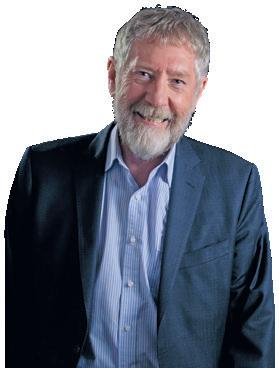
Autumn is the best time of year to do all your planting and pruning
The small number of investigative reports against the large number of accusations of corruption does little to build trust in theACT Integrity Commission chief Michael Adams KC.
An elderly woman with hearing loss came to my clinic for a second opinion, after she had recently been to a hearing aid sales person. I found the cause of her hearing loss was simply the fact that she had build-up of wax in her ears, the salesperson had failed to inspect them. You might be surprised how often this happens!
Here are some things to do to avoid getting ripped off:
1. A visit to the GP may save you from being ‘sold’ something when your only problem is wax in your ears.
2. Look for someone who is independent and can offer you unbiased advice, not just give you a sales pitch.
3. There are a range of hearing aid prices. Finding the right hearing aid might save you money and it will also give you the best chance of success.
4. Hearing aids can be expensive.

Recently I was told by two different patients that they were quoted $16,000 for a pair of hearing aids. This seems a ridiculous amount of money to pay and is most likely not appropriate for the majority of people (or possibly anyone).

5. If you are a pensioner or partpensioner, or a DVA gold or white card holder, you should carefully consider if you want to use the free-to-client government hearing aids or if you’d like to top-up to a different hearing aid.
The free-to-client hearing aids are appropriate for many people, however if you have great difficulty hearing background noise (for example in restaurants) then you might trial the top-up hearing aids, but only if you can afford them. There are a range of top up options and prices, if you are disappointed after a trial, you should return them and trial the free-toclient hearing aids.
If you get the feeling the person you’re dealing with is just trying to sell you something, then take a step back and get a second opinion.
“In an unregulated market there is a lot of opportunity to take advantage of people. Yes you have read correctly, there is no licensing of people who sell hearing aids.”
– Dr Vass
– you need professional advice, not a sales pitch
LAST week’s decision by the Australian government to acquire a strategic sovereign partnership with CEA, the nation’s most advanced defence technology company, is the culmination of an extraordinary Canberra saga.
The deal, negotiated by governments on both sides of the political aisle, will have profound consequences for Australia’s standing among its close allies.
It will also continue and expand the financial returns to the national treasury from a company that employs many of Canberra’s best and brightest among its more than 600 employees in its four Fyshwick buildings.
The government bought out the former partner, the American defence contractor, Northrop Grumman.
From July, the Commonwealth will hold a non-controlling shareholding for 18 months, after which it will become the majority owner of a fully Australian entity.
The announcement, by Deputy Prime Minister and Defence Minister, Richard Marles, Finance Minister Katy Gallagher and Defence Industry Minister Pat Conroy, was deliberately and appropriately low key.

In 2018, I was approached by the then CEO of the company with a commission to write a book on its remarkable rise from the founding trio (or quartet if you include Will) to its then becoming Canberra’s biggest private employer. I spent a year on a massive research and writing regime – one of the most enjoyable of my career. The atmosphere at CEA was friendly, helpful and intellectually thrilling. The staffers were co-operative, the subject fascinating, and both Ian Croser and the Gauls were trusting and respectful.
It was typical of a business started on August 8, 1982, by two young RAN lieutenant commanders – Ian Croser and David Gaul – who left the Navy to strike out on their own.
Initially, they had one employee, David’s wife Carey and their first premises were a mere 80 square metres at 14 Fyshwick Plaza where Carey’s father, who had retired from the family’s Riverina farm and moved to Canberra, rallied to the cause.
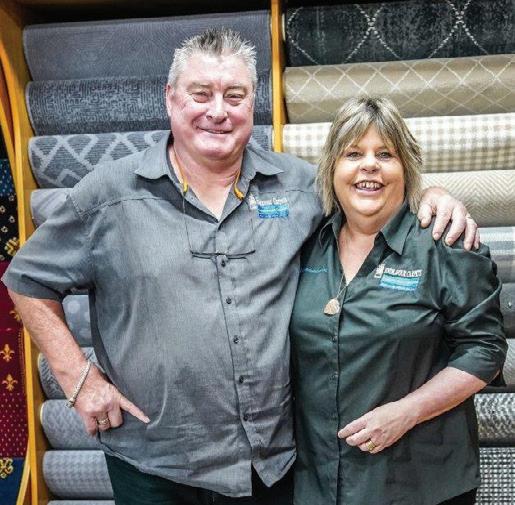
“He worked out the back making benches,” Carey says.

They also had a silent partner, the
But once the work was completed, sud denly there were new elements arising, not least the realisation that because of its partnership with the American Northrop Grumman, the sovereignty element of the company’s technology would require an Australian alteration to the shareholding. Until that could be resolved, the book was put on “hold”. And for the last five years it has been necessary to speak not a word of CEA even to one’s closest associates. For an author trained as an investigative journalist, that is a special torture.
Whether the full story can now be told hangs in the balance, but it’s a huge relief to, at last, break the silence.
“will to succeed”. Indeed, in the early days they spoke of him so often that he became a lifelike figure.
“My birthday is August 6,” Gaul says, “Ian’s is August 7, so ‘Will’s’ is August 8.”
They were off and running. Just where they were running to was a totally unknown destination.
“All my friends thought I was mad,” Gaul says. And there were occasions in the very early days when he was inclined to agree.
However, the two men – Croser, a near genius with the manipulation of
personality and business orientation – were perfect foils for each other.
Despite some near-run disasters in the complex world of government defence procurement, they not only survived, they created an organisation that supplies the most cuttingedge technology to all three Australian defence forces and a remarkable range of materials and services to the US and other close allies.
Minister Conroy said: “CEA is an Australian manufacturing powerhouse, with world leading know-how that has led to the design and development of cutting-edge radar systems. [They] are critical sovereign capability.”

High on the company’s priorities is the CEA treatment of staff where Gaul and Croser adopted the naval standard of care, attention and respect.
Before the official government announcement, for example, Ian Croser, who unlike David Gaul, remains an active element in the company’s operations, addressed the staff.
“The reason for the move,” he said,”is that the technologies and system capabilities CEA has been able to develop and field has for some time been deemed to be of sovereign significance and value to Australia and our close allies. The consolidation of shareholdings will assure the future.

“I intend to remain active in the company on a day-to-day basis, for as long as the company, the board and I feel that I am still contributing. I do wish to thank you all for your continuing contribution to Australia’s strategic and sovereign capabilities. I remain proud and in awe of the collective and cumulative achievements of you and your predecessors.
“I would also like to recognise and have you understand that there have been many predecessors to our current staff profile. These include the other part of the founding group of three, David Gaul and his wife Carey. Without this relationship we would not have survived the rigours of transition from a start-up company to where we are now.’








ANZAC Day should not be commemorated because it divides Australians on the basis of military service. Said no Australian. Ever.
Forty-nine per cent of Australians were born overseas or have one or both parents overseas born. They have little connection to “King and Country” that took Australia into a European war.
The disaster at Gallipoli had many causes, but one certainly was a misconception that Ottoman troops would never fight like an Englishman or their white descendants in the Australian and NZ colonies.
Almost all those from the world wars have passed. A smaller number who remain from wars fought alongside our American allies – and all these wars ended in Gallipoli-style disasters. Precious lives lost without victory.
Yet Anzac Day remains a very important part of our heritage, of what unites us all as Australians. We must keep this flame alive.
We also have a long cultural tradition dating back 60,000 years. The dreamtime, our ancient heart, the keepers of the flame in the words of our unofficial national anthem.
Recognising this heritage will, like Anzac Day, strengthen and unite us.
No evidence is ever produced that the Voice will divide us by race.
Just a minority belief that if repeated often enough it will be accepted by some voters as the truth.
Noel Baxendell, HoltGOOD on Jeremy Hanson for presenting a Voice opinion (CN April 20). However, it would have been preferable had he stuck to facts as I tried to do.
It’s a worry that a politician such as Mr Hanson seems to know little about the constitution, for instance, that it already enables laws affecting people of different races – Sec 51 (XXVI).
Furthermore, his “we’re working tirelessly to treat every individual equally”, is one of the great conservative myths. We have been discriminating against indigenous people since first contact and still are. The examples are voluminous, so there’s no need to repeat them here. The seemingly endless phrase, “closing the gap” should be sufficient.
It’s Mr Hanson who is being divisive by asserting the current indigenous MP’s work may be undermined by the Voice. With encouragement, they could be very helpful in making the Voice more effective (and, I expect, most will be keen to do so).
Next, there’s the claim that the Voice “risks an ongoing quagmire of High Court challenges”. So, Jeremy knows more than three former High Court judges (two of them chief justices) with more than 30 years’ collective court experience who say very clearly, any judiciable risk is highly unlikely.
Finally, Mr Hanson again raises the old ATSIC chestnut. Apparently, his “research” failed to uncover the obvious – that ATSIC
was in no way comparable with the Voice. Is it not being able to see – or not wanting to?
Eric Hunter, CookJEREMY Hanson MLA appears to make considered arguments against the Voice to parliament that lay out why he will be voting no.
Firstly he doesn’t want to “entrench any racially based entity that treats one group of Australians differently to other Australians”. Sounds reasonable.
Unfortunately, educational results, incarceration rates, life expectancy all prove the fact that we have failed the first Australians. Aborigines did not get the right to vote in Queensland until after 1967, as one example.
Mr Hanson states that he fears “institutionalising racial division in our founding document”. Our founding document was created after a referendum to all six states (there were no territories then) who were asked to amalgamate to form a nation. Again sounds reasonable. So who could vote in this referendum? Well, certainly no woman voted, also if you were a male who did not own property. So bad luck poor working-class males, such as the Irish and English. If you were of any other ethnic group, such as the 40,000 Chinese, you could not vote and, of course, no Aboriginal or Torres Strait Islander was asked their opinion.
The case he presents denies the true reality. The fact is our founding document is as flawed as any document that advantages privileged white, wealthy males above all others.
It is time to acknowledge the truth and the failures of the past and not make statements that present a distorted view of that past.
This is a moment for the future. If we get it right we build a bridge to the oldest culture on the planet. When we cross that bridge we can make amendments to any policy, law or regulation we create.
Like a good marriage it will take negotiation and compromise and most of all honesty. Something sorely lacking in Mr Hanson’s article.
Colin Lucre, via emailIN his article “Why I’m voting No” (CN April 20) MLA Jeremy Hanson, in supporting the push by Peter Dutton and Jacinta Price for local and regional Voices (but not a national one), does not mention two related issues.
Firstly, how would local and regional Voices from six states and two territories make their views on national policy issues known to the federal executive and the parliament?
Is the Coalition advocating the parliament and executive should receive representations from at least eight different
Voices when framing policy rather than one? Or are they expecting local and regional Voices to submit their views through their federal members of parliament, who may hold different views, or be members of the political party in power making objectionable policy?
Secondly, there are already Aboriginal and Torres Strait Islander groups dealing with state and local issues. For example, in the ACT there’s the Aboriginal and Torres Strait Islander Elected Body, and in Victoria the First Peoples’ Assembly.

Is the Coalition advocating these groups be amalgamated with their proposed layer of local and regional Voices dealing with national issues? Or is the taxpayer to support a multitude of Voices?
Dutton has constantly insisted the Albanese government provide more details about the operation of the Voice. Will Jeremy provide details about their alternative approach?
Bill Bowron, via email“CityNews” welcomes all opinions on the Voice to parliament to editor@citynews.com.au
ANY attempt by the government or media to force people to vote
“yes” in the coming referendum by threatening them with the racist tag or some other disparaging term will most likely end in failure.
Moreover, if people suspect the government is attempting to deceive them by refusing to disclose the full meaning and scope of the Voice they will oppose it.
True, Australians are a fairminded people and are prepared to listen to contending points of view, but they will never tolerate threats or deceit or be told how to think; nor will they allow themselves to be overwhelmed by cheap displays of emotion calculated to influence their vote.

I WOULD like to let letter writer Eric Hunter (CN March 23) know that I fully support the constitution, and that is why I object to the Voice.
There is no need for the Voice. There are already 3000 Aboriginal Corporations, 30 Land Councils and 1300 people working for the NIAA –what more do they need?
There are a number of legal people and leading Aboriginals (including some that support the Voice and worked on the working group) that have stated on TV that what the prime minister is doing means it is racist or will cause racism, will split the nation and is doomed to failure.
The rest of the population do not have a Voice to parliament so why is it necessary?
Mr Hunter’s comment that Hugh Selby is a legal affairs commentator, was a gross misrepresentation of what Selby actually is.
Selby is a barrister, practising in criminal law for both defence and prosecution, a teacher and author. Mr Selby did an excellent job explaining and referencing the report.
Vi Evans via email
ERIC Hunter (“Cut through the noise, Voice is a moral imperative”
CN March 30) asks the question: “Can the doubters guarantee
Cartoon: Paul Dorin
that voting ‘no’ would result in significant betterment in the lives of indigenous Australians?”
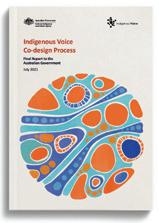
One could equally ask: “Can the pro-Voice advocates guarantee that the Voice will?”
Additionally he asks: “What do the dissenters know that a very impressive list of supporters across the spectrum don’t?”
For Eric’s enlightenment, they know that an equally impressive list thinks otherwise and that both the legal fraternity and the indigenous community are hopelessly divided on the issue, which does not bode well.
Under the circumstances, to proceed with the referendum would be arrogant and a waste of an estimated $82 million of taxpayers’ money.
Member for Fenner and federal Competition Minister ANDREW LEIGH explains why he will be campaigning for a ‘Yes’ vote in the upcoming Voice referendum.

have a veto right. It will simply allow the voices of indigenous Australians to be heard on matters that affect them.
history
First Nations people is to hold two big facts in our minds.
One is the remarkable history of those who first occupied a continent. At least 60,000 years ago, people settled in Australia, creating what is now the oldest known civilisation on earth.
By the time Ancient Greece and Rome were getting started, First Nations people had already occupied Australia for tens of thousands of years.
The other big fact is what happened after settlers arrived and proclaimed British sovereignty on January 26, 1788. Over the next century, Australia’s indigenous population declined, due to violence, disease and starvation. In 1788, there were around 800,000 First Nations Australians. By 1900, there were fewer than 100,000.
Just imagine a catastrophe that killed seven out of eight of the people you love. Imagine a disaster which reduced Australia’s population from 26 million to three million. Imagine a disaster whose impact was worse than the Bengal Famine, the Siege of Stalingrad, or Pol Pot’s killing fields.
The settlers failed to recognise the complexity of First Nations societies,
and their deep connection with this ancient land. Until the High Court’s Mabo decision in 1992, the official judicial position was that Australia before 1788 was terra nullius – a latin phrase that literally means “land of nobody”.
Reconciliation requires truth-tell ing. And reconciliation also requires a sense of celebration – a recognition of how lucky we non-indigenous Australians are to share this land with its first peoples. What a history. What resilience. What achievements.
Nowhere is that truer than on the sporting field. From the indigenous cricket team that toured England in 1868 to Cathy Freeman winning gold at the Sydney Olympics; from Johnathan Thurston captaining the Cowboys to their first NRL Premiership to Ash Barty winning Wimbledon, indigenous Australians have caused our hearts to swell with their success. Evonne Goolagong Cawley and Adam Goodes showed us the meaning of grace when they responded to racism with compassion and kindness.
Six years ago, the “Uluru Statement from the Heart” asked Australians to walk together on the journey towards
When we have power over our destiny our children will flourish. They will walk in two worlds and their culture will be a gift to their country.
We call for the establishment of a First Nations Voice enshrined in the Constitution.”
Just 439 words in total, the “Uluru Statement” is as generous as it is powerful. That is why I will be campaigning for a yes vote in the upcoming referendum.
A First Nations Voice to Parliament will not be a third chamber. It will not
For my own part, listening to indigenous Australians has made me a better politician.

In my own electorate, the First Nations community of Wreck Bay occupies an idyllic corner of the Jervis Bay Territory, working with Parks Australia to manage the Booderee National Park. Spending time in this unique community, I’ve learned about how indigenous rangers mix traditional ways and modern science.
Locally, I have been privileged to learn from local Ngunnawal leader Tyronne Bell how to speak an acknowledgement of country in Ngunnawal language. When I am in Canberra, this is how I begin most of
We have nothing to fear and everything to gain from listening to First Nations Australians. Hearing their stories, understanding their dreams, and recognising their perspectives will make us a richer nation.
On May 27, 1967, Australians voted in favour of changing the constitution to give the federal government power to make special laws for indigenous Australians in states, and to include indigenous Australians in population counts for constitutional purposes. As the official argument for the ‘Yes’ case put it: “Our personal sense of justice,
our commonsense, and our international reputation in a world in which racial issues are being highlighted every day, require that we get rid of this out-moded provision.”
The referendum received 91 per cent support – the highest vote ever recorded in an Australian referendum. In every state, a majority voted yes. It stands now as a proud moment in Australia’s reconciliation journey. A yes vote in 2023 will be a similarly proud milestone. Not only will it strengthen Australia’s decision-making process, it will also acknowledge the central role that First Australians play in our nation. Like the 1984 Sex Discrimination Act and the 2017 marriage equality reform, a Voice to parliament will lift people up, without bringing anyone down. It promises to unite our nation, and show to the world how Australia values inclusion and celebrates diversity. It will recognise the two big facts that are at the heart of how First Nations people have been treated. In writing this piece, I am keenly aware of the irony of a non-indigenous politician talking about the need to listen. I am honoured to write alongside First Nations leaders such as Marcia Langton and Tom Calma, whom I deeply admire. Their voices –and those of other Indigenous elders – should be central in this important national conversation.
The trial of Bruce Lehrmann, accused of raping Brittany Higgins in Parliament House in 2019, was sensationally ended in October when the entire jury was discharged after a juror was found to have brought a research paper on sexual assaults into the jury room. So, what’s it actually like to be a juror? Legal columnist HUGH SELBY explains…
AFTER you receive a notice to be a juror then you, along with a crowd of others, will turn up wondering what happens.
At court you’ll watch a useful video explanation of typical jury duty. Being a bit stressed you won’t recall much of it.
After the video and a cuppa, your group (known as a panel) will be guided into the public gallery of the trial court for the jury selection.
Each person will be assigned a number. The names of witnesses will be read out so that any prospective juror with knowledge of a witness is sent to another trial.
Those seeking to be excused from being jurors will explain their reasons in a private conversation with the trial judge who will then say “go” or “stay”.
One of the court staff will pick a number from a small box and call it out. The person with that number then walks from the public gallery to the jury seats.
Either the prosecutor or defence may make a pointless “challenge”, in which case that person will go to another trial. The challenges are pointless because there is nothing to back them up: they are just theatre.
The number calling continues until alongside you there will be at least 11 fellow jurors. There may be several more, possible replacements if one or more of those chosen in the first 12 are not able to take part in the jury decision-making, because they are ill or have been taken off the jury for some reason.
You will have noticed that the advocates are wearing black gowns and wigs (unless both agree not to). Why we maintain this nonsense defies rational thinking; however, sufficient advocates think horsehair on their head (rather than in old pillows) is so attractive that occasional votes to get rid of it fail.
Those chosen jurors now listen to the judge’s welcome.
This will outline the trial journey, what happens if you get sick/can’t come and that you must limit the information you consider as a juror to the evidence that you see and hear in the trial (that judge’s instruction doesn’t work – in the ACT we know from a 2022 trial that 17 repetitions are insufficient).
You are instructed to choose your chairperson during a break, that you can send the judge notes with questions or requests via that chairperson, and that you can make notes of the evidence with a pad/ pencil or tablet – but they stay in the courthouse.


There’s a double standard built into our jury trials: you are told that you are important, that you are the judges of the facts, but you are then treated as the audience to a play in which you are not an active player: be seen, but not heard is the unstated instruction from the time you enter the public gallery until you go to the jury room to decide the accused’s fate. Then and only then do you matter.
The prosecutor opens with an outline of how they will present their case, setting out what each witness will tell you about. It is NOT an argument to persuade you.
They may tell you about the law – this can be really useful, but they have to tell you that the judge will explain the law later (usually at the end of the trial) and the judge’s explanation is what matters.
This is confusing because now you have no idea whether you should have paid any attention to the prosecutor’s explanation of the law.
The defence advocate may make an opening, if they think it’s worthwhile. Why? It’s up to the prosecution to prove its case and the defence may choose not to share its defence plan with them or with you, the jurors.
It’s quite possible that the defence strategy is no more than picking holes in the prosecution case. Why?
Wouldn’t you like to be told about the applicable law from an authoritative source before you hear the evidence? Not having that law is rather like going to a sports event but having no idea about the rules of the game.
If the judge hasn’t explained the law, then send a note asking them to do so before the first witness is called. There may be one or more counts (or charges) that you must consider, possibly with different legal tests.
And if they won’t explain the law? Fine, it can become an appeal point and we can improve jury trials either by appellate judges being proactive, or our pollies amending the law to make the experience of future jurors better.
At any time during the trial there can be legal issues that the judge needs to resolve. Examples include whether some evidence will be allowed or not, whether something has happened that requires a juror or all the jury to be discharged, or how to answer a note from the jury.
You’ll be sent out to your jury room while that discussion happens: use the time to chat about what’s happening and get to know each other.
The prosecution calls its witnesses. They have control over the order. Each one is questioned by the prosecution (that’s evidence in chief) then cross-examined by the defence (if there is more than one accused then more than one lawyer may crossexamine) and then the prosecution gets a second go with their witness
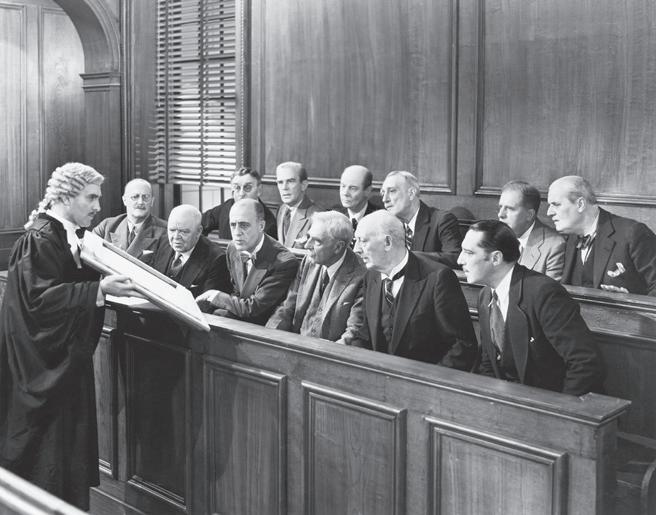
Remember, the prosecution has to prove its case. The defence does not need to disprove.
You are assessing the believability of each witness along with the value of his or her evidence. You will be watching as well as listening.
“Good character” evidence is often a part of the defence – especially for those with no prior criminal history. Because it may be your only insight into the accused’s past life, be sure to pay close attention to those witnesses as they talk about the accused’s past character.
Once a witness is excused then their part in the trial is finished. Sometimes, however, a witness is “stood down”. This means that they can be called back.
If you feel that something is missing in the evidence then send a note before the witness is excused: “Can this witness tell us anything about X?”
You will be sent out to the jury room while the judge and the opposing lawyers discuss the answer to your question/s.
The lawyers sum up their case with a closing argument, which will mix facts and legal principles. Too many of these go on for too long. Don’t pretend you can pay attention for more than an hour.
Ask for a break, especially midafternoon. You can also ask them, by a note through your chairperson, for their argument
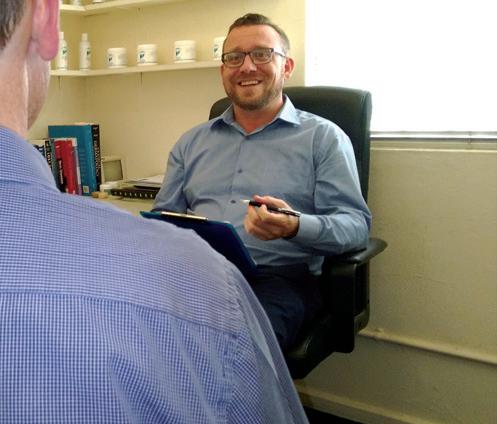
about such and such. You don’t have to accept what they tell you.
Then the judge gives you directions, a lot of them. They have to – it’s the law. The directions on various legal principles are rather formulaic, so if you don’t understand a point/s then ask the judge to repeat it.
Then, at long last, you become important. Twelve jurors are sent to the jury room to reach a decision about guilty or not guilty on each charge, be that one or many.
Respectful discussion is the key to reaching a decision that feels just right. Let everyone briefly state what they see as the key points. Don’t start with an open poll (like a show of hands) because that introduces division too early. Ensure that everyone is heard, but put a collective stop to those who seek to dominate or waffle.
You can ask the judge for parts of the evidence to be replayed (because it’s all recorded). When you take a poll make it anonymous.
While patience is a virtue, it has limits. What if there is an obdurate dissenter to everyone else’s decision? You cannot change a fixed belief. Put an end to the discussion as soon as the judge lets you – and get discharged.
ACT law requires a 12 to 0 decision. Other places have changed the law to allow 11 to 1, even 10 to 2. Here, a unanimous result is required. Do your best.
When it’s all over, and you are parting from your fellow jurors, take a moment or two to enjoy the knowledge that you have given back to your community.
Hugh Selby is the “CityNews” legal affairs commentator. His free podcasts on “Witness Essentials” and “Advocacy in court: preparation and perfor mance” can be heard on the best known podcast sites.
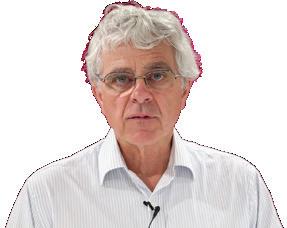
Winnunga Nimmityjah AHCS is an Aboriginal community controlled primary health care service operated by the Aboriginal community of the ACT. In Wiradjuri language, Winnunga Nimmityjah means Strong Health. The service logo is the Corroboree Frog which is significant to Aboriginal people in the ACT.

Our aim is to provide a culturally safe, holistic health care service for the Aboriginal and Torres Strait Islander people of the ACT and surrounding regions. The holistic health care provided by Winnunga AHCS includes not only medical care, but a range of programs to promote good health and healthy lifestyles.
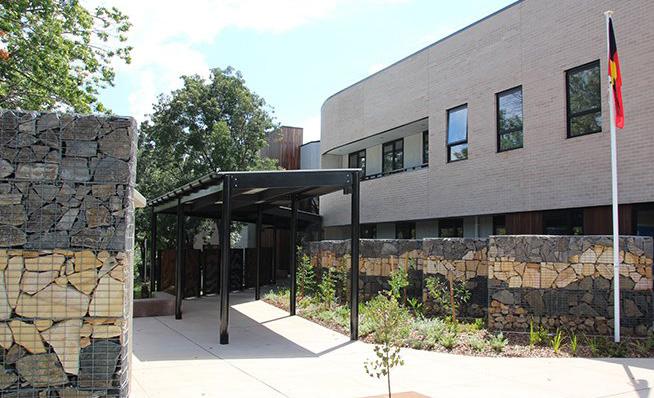
Our services include:
• GP and Nursing
• Midwifery
• Immunisations
• Health Checks
• Men’s & Women’s Health
• Hearing Health
• Dental
• Physiotherapy
• Podiatry
• Dietician (Nutrition)
• Counselling
• Diabetes Clinic
• Quit Smoking Services / No More Boondah
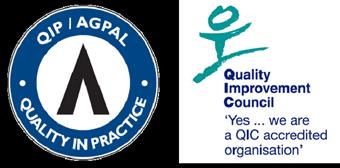
• Needle Syringe Program
• Mental Health Support
• Healthy Weight Program
• Healthy Cooking Group
• Mums and Bubs Group / Child Health
• Optometry Service

• Psychology and Psychiatrist
• Community Events
• Groups
ALL OUR SERVICES ARE FREE OF CHARGE • WE MAY BE ABLE TO ASSIST WITH TRANSPORT
Winnunga AHCS is a national leader in accreditation, was one of the first Aboriginal community controlled health services to achieve dual accreditation under RACGP and QIC standards. Winnunga AHCS has been at the forefront of setting a national agenda for quality improvement in Aboriginal community controlled health and continues to advocate locally and nationally for best practice standards in operational and governance areas of Aboriginal health services.
CLINIC hours | MONDAY TO FRIDAY 9am-5pm
Ph: 6284 6222 | 63 Boolimba Cres, Narrabundah www.winnunga.org.au
COVID-19 Vaccinations and Testing for Winnunga ClientsWITH the ACT planning a switch to all electric buses in 2040, we have 17 more years of pollution!
Have Canberrans elected an unprecedented number of Greens for that kind of policy?
Of course, with non-polluting e-buses running faster than the tram, the question would increasingly arise: “Why are we spending billions on the tram and suffer the roadworks for many years to come?”
Further, one can’t ignore the pollution caused not only in the production of concrete and steel for laying the tracks, but also for the stops where on the route to Woden, passengers have to be ferried into the middle of the road often by bridges and elevators. These produce additional greenhouse gases in their construction, operation and constant maintenance.
At other locations traffic lights will be used to get passengers to the stops, slowing down traffic, as on Northbourne Avenue.
Further, tram tracks in the middle of the road occupy space inaccessible for emergency vehicles when the calamities of climate change will visit us again and might well be responsible for the loss of life.
Last, not least, the question needs to be answered why we import totally assembled trams from Spain – the transport alone a further source of CO2 – when electric buses are produced in Australia, providing jobs and the possibility for export to Asia.
We have reached a point where heavy expenditure on advertising and public relations is failing to convince the public (except those living or planning to purchase next to a tram stop) of the rationale for extending the light rail to Woden.
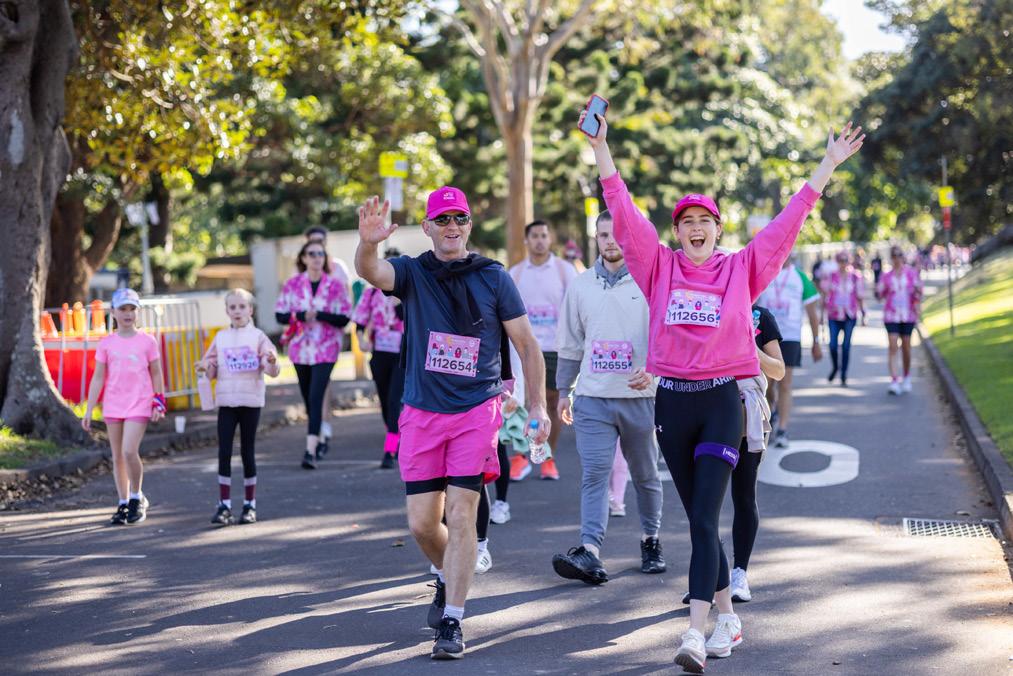
Greens/Labor MLAs need to be increasingly prepared for awkward questions like: “What’s in it for you that, against all reason, you cling to that outdated policy of 2012?”
Robin
their cost-benefit analysis (if there is one) such an expensive problem?
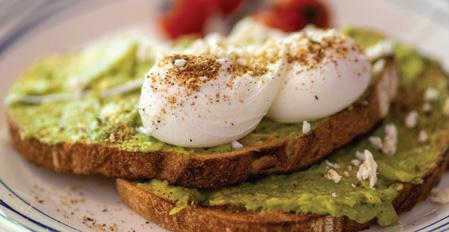 Dr Douglas Mackenzie, Deakin
Dr Douglas Mackenzie, Deakin
as those submitted earlier about the draft planning bill?
And what on earth are they doing to consider and address the 49 recommendations made public on December 22 by the Assembly’s tripartite committee of inquiry into the draft planning bill?
Silence is not golden.
overheads across the several doctors as a local “co-op” – there is, of course, a big business in running these things with a number of corporate players nationally acting as “middlemen” and shunting hundreds-ofmillions of dollars annually to executives and shareholder profit.
Sue Dyer, Downer Underwood,
Underwood,
via citynews.com.au
IN “Letters” (CN April 20), I discussed the engineering problems for light rail stage 2B (to Woden) in the Adelaide Avenue overpass at Hopetoun Circuit, one of the two most-used connections between the suburbs of Deakin and Yarralumla.
About a kilometre to the west is the Kent Street overpass, perhaps an even busier connection between the two suburbs.
There is a slope of about 12 degrees in the Adelaide Avenue median strip. Building light rail tracks would therefore necessitate a considerable amount of earth moving to provide a level base for the rails. It’s hard to imagine this process, and all the road traffic disruption it will cause.
It is also hard to see this work costing less than several hundred thousand dollars. Has the Barr government factored into
THE gate is wide open for the Liberals (“Libs need to pay more attention to planning”, citynews.com.au, April 15), given that the Labor/Greens ministers and MLAs seem to have gone to ground on all topical matters concerning planning reform. Collective silence and very poor reaching out to constituents, for far too long, on the impacts and deficits of current planning practices, let alone what improved “outcomes” will be experienced very soon in electorates, and how this will happen, only reinforces the feeling that the “reform” bulldozer forges ahead and that it’s all about “our way or the highway”.
When emerging to campaign next year, many MLAs are likely to be tested about their engagement, or lack of it, on various planning matters. Residents will be able to sense any easy recourse to political party patter and to new superficial spin about the workings of the new “outcomes” system from Labor/Greens candidates.
In the meantime, how many MLAs have bothered to acquaint themselves directly with the hundreds of publicly accessible submissions made on the latest major planning reform documentation, as well
THE medical centre I visited recently texted me to announce that gapless bulk billing will be ending for most of its patients and weekday appointments, and will be totally unavailable on weekends irrespective of personal circumstances.
Gap fees are no small matter for people in low-income employment in retail, hospitality, care occupations, transport/ rideshare, cleaning and so forth. Gaps at a minimum are over $60 for the briefest consultation through the week, rising in stages to a whopping $150 out-of-pocket for a 20-minute appointment on the weekend.
And it doesn’t stop there: less common “prolonged appointments” of 40 minutes can run as high as a gap fee of $200!
I understand why doctors gravitate to these “clock on/clock off” jobs in “doctor nests” where reception, insurance and much else is all handled for them. But at what cost to the patient?
Group practices don’t simply share the
So the convenience of the doctors comes at the cost of us paying twice: we are paying for (usually a very brief) conversation with a doctor, but we are also paying a commercial rate to a corporation that has inserted itself into grassroots medical care and is doing very nicely out of it, thank you very much.
Way back in my childhood in the ‘60s it was a very different medical landscape. Family doctors organised themselves into independent practices deep in the suburbs. Indeed, you might have had a doctor’s practice as your neighbour, with part of a house converted as the medical surgery and waiting room.
My parents were battlers back then, and with a large family, yet I don’t recall that the doctor’s fee was a drama.
Possibly this was because they were only being charged once, so to speak – by the doctor himself.
So I’m left wondering if part of the crisis in GP affordability is because the system has been colonised by rent-seeking corporates, and if the other part of the problem is that the once-humble family doctor is no longer “one of us” and has gradually become an executive with the corresponding executive salary?
Ross Kelly, Monash
ference of about 80cm for women and about 90-94cm for men.




ANYONE who has tried to lose weight will be familiar with these nine frustrating words: the last five kilos are the hardest to lose.
You’re just about to hit your target weight, but suddenly the scales won’t budge – even though you’re still following the same healthy diet, lifestyle habits and exercise plan.
There’s a scientific basis for why losing the last few kilos is hard, it’s called the weight-loss plateau.
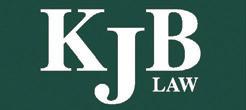
The weight-loss plateau is basic biology. When your body registers something threatening its survival, it automatically triggers a series of physiological responses to protect against the threat.
So when we adjust our diet and reduce our calorie intake, our body registers we’re losing weight and believes it’s under threat. It makes adjustments for protection, reducing our metabolic rate and burning less energy, slowing the rate at which we lose weight.
It also secretes higher levels of an appetite hormone called ghrelin, which is known to increase hunger and promote the conservation of fat stores.
Research has shown this plateau starts to creep in anywhere between three and six months of weight loss,

and then typically weight regain occurs.
A weight-loss plateau can be hard to break. Whatever the time frame, it’s a sign your previously successful approach to losing weight needs modification. Here’s what you can do:
The first and most important thing you may need to modify when you hit a weight-loss plateau is your defini tion of healthy body weight.
Ask yourself: what’s so special about the weight I’m trying to achieve?
Many people use the body mass in dex (BMI) to set their weight-loss goal but the number on the scales – and the score generated when you enter your weight and height into the BMI calculator – is nonsense. It doesn’t tell the whole story of what it means to be a healthy weight.
This is because the BMI calculator misses two more meaningful measures: body fat percentage and body fat distribution.
If you’ve been exercising regularly as part of your weight-loss plan, you’ll have gained muscle, or improved your muscle-to-fat ratio, and muscle is heavier than body fat, impacting the number on the scales.
You’re also likely to have changed where fat is distributed in your body, reducing the amount of unhealthy fat stored around the stomach, close to the organs, thus reducing your risk of disease.
So grab the tape measure, check how your clothes fit, and think about how you feel to confirm whether you really need to lose those final few kilos. Work towards a waist circum-

The current fad is intermittent fasting. This often means breakfast is the first to be scrapped from the menu in an attempt to cut calories from the diet and shorten the time you’re allowed to eat throughout the day. But when you eat and how much you eat at each meal does matter, and it’s breakfast that’s the most important.
Controlled research studies have shown this is the time when your body best uses the calories you put in – in fact, it burns the calories from a meal two-and-a-half times more efficiently in the morning compared with the evening. Instead of reducing your eating window, load up your breakfast and reduce the size of your evening meal.
3. Consider more strengthbuilding exercises
Relying on diet alone to lose weight can reduce muscle along with body fat. This slows your metabolism, and makes it harder to keep the weight off in the long term.
Any physical activity will go a long way to preserving your muscle mass, but it’s important to incorporate a couple of days of strength-building exercises in your weekly exercise
routine. Exercises using body weight –like push-ups, pull-ups, planks and air squats – are just as effective as lifting weights in the gym.
4. Review your food intake



As you lose weight, your body requires less fuel, so reviewing and adjusting your calorie intake is essential when you hit a weight-loss plateau. Generally speaking, you need to consume 10 per cent fewer calories when you reduce your weight by 10 per cent, just to maintain the new weight. But this shouldn’t mean deprivation or starvation. Instead, you should be focusing on an abundance of nutrientdense foods and keeping the treats and takeaway to just once per week.
5. Check your stress
Stress will derail your weight-loss success. Stress increases your body’s production of cortisol, promoting fat storage and triggering unhealthy food cravings.
The best type of stress management is exercise. To encourage more exercise, take up something you enjoy, no matter what it is.
Nick Fuller, Charles Perkins Centre Research Program Leader, University of Sydney. This article is republished from “The Conversation” (theconversation.com).
When losing weight, the last five kilos really are the hardest to lose. NICK FULLER explains why, and what you can do about it…
clothes fit and think about how you feel to confirm whether you really need to lose those final few kilos.
EVERY May, the ACT Law Society co-ordinates Law Week in Canberra – five days of events to promote public understanding of the law and its role in society.
Law Week has been held annually in the ACT since 1984, showcasing a range of events for the public and the legal community, including a formal dinner, a comedy speaking competition, a quiz night and a range of forums and seminars.
On May 8, an evening launch event will feature the ACT Golden Gavel, a comedy speaking competition for early career lawyers hosted by the society’s New Lawyers Committee.
Law Week events are open to the public, and many have free registration. Optional contributions to support the Law Week charity are welcome though, with all proceeds this year going to Rainbow Paws, a local charity providing assistance to pets and their people through hard times, including free or subsidised
food, bedding, supplies, and medical treatment for companion animals.
Farzana Choudhury, president of the ACT Law Society said: “As a community lawyer, I have seen first-hand the positive impact that companion animals have for people experiencing or at risk of homelessness, and people with disability.

“I have a whippet named Prudence, and I love the companion -
ship she gives me and the connections I have formed with fellow dog appreciators. Everyone should have that same opportunity. A big thank you to Rainbow Paws for your amazing work.”
The people who attend Law Week are not just lawyers – anyone with an interest in legal issues is welcome to attend the events.
This year, Dr Helen Watchirs OAM will deliver the free annual Blackburn Lecture on human rights in the ACT, the Women Lawyers Association of the ACT is hosting dinner with international human rights lawyers Diana Sayed, and the ACT Bar Association will host a breakfast with special guest Justice Dina Yehia of the NSW Supreme Court.
There’s also a Law Week Exhibition hosted by the ACT Courts and Tribunal where people can learn about the judicial system in the ACT, including a “You be the Judge” event focusing on sentencing.
A full schedule of Law Week events is at actlawsociety.asn.au/about/law-week
long and respected presence in the Canberra community for 46 years.
“We are a down-to-earth firm. We always communicate in plain English to demystify the law to our clients and treat them as equals,” he says.
Fellow principals, Andrew Freer and Jo Twible, say their longevity provides consistency and certainty to clients as they navigate many different fields of the law at different times in their lives and in their businesses.
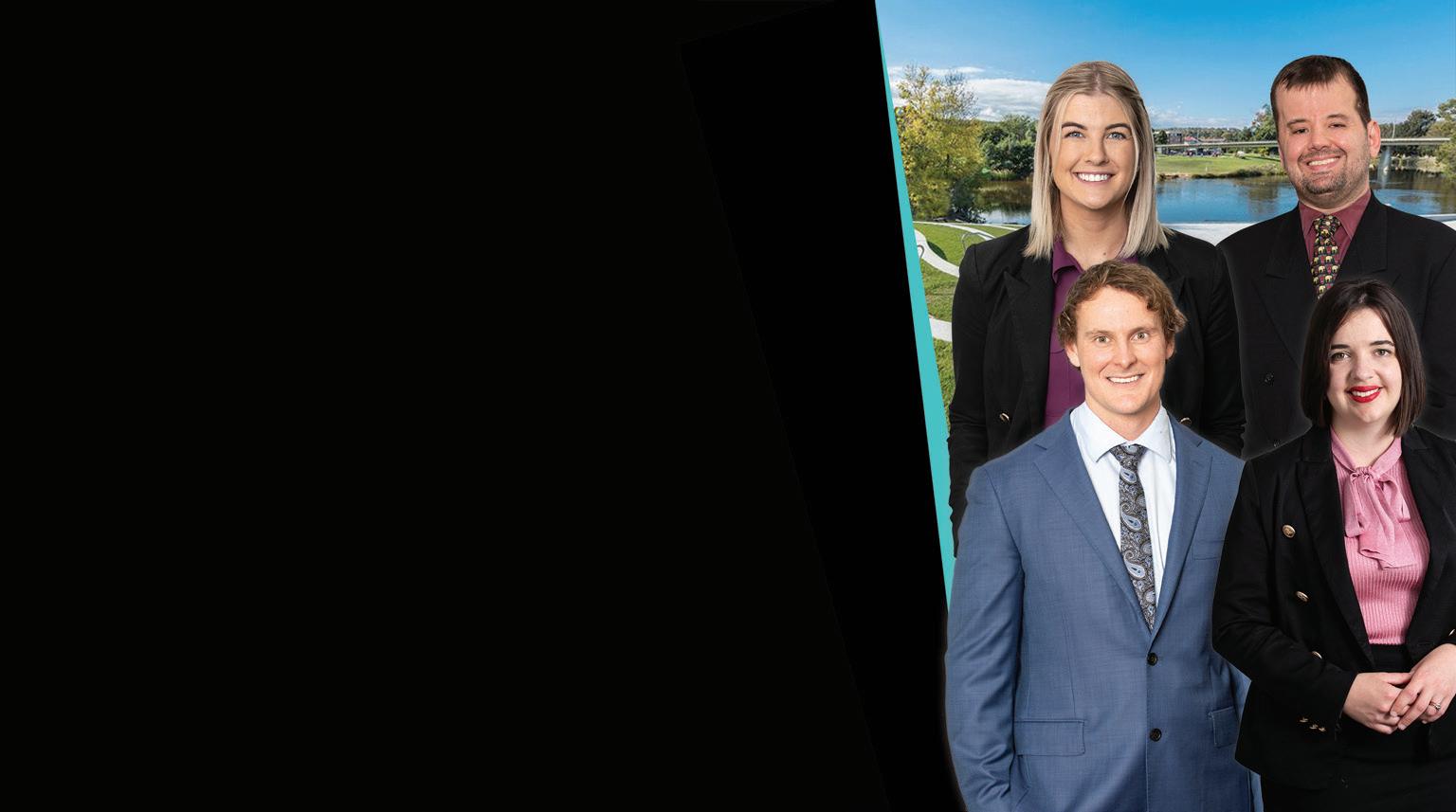

Andrew says it’s very satisfying to have built long-standing relationships with his clients over the 23 years he has been with KJB Law.
“We have a personal approach and work collaboratively with clients and colleagues,”
issues that have arisen.”
Jo Twible started at KJB Law 26 years ago and remembers that at the time there were only 14 staff, and now the team is more than 30.
“We tend to hold on to our clients so we are there should they ever need assistance and help in rebuilding their lives,” she says.
Spanning many fields of law such as family law, commercial law, conveyancing and wills and estate planning, Jo says that apart from criminal and administrative law, the team at KJB Law are experienced and ready to help their clients navigate legal issues.
KJB Law, ground floor, 10 Corinna Street, Woden. Call 6281 0999 or visit kjblaw.com.au
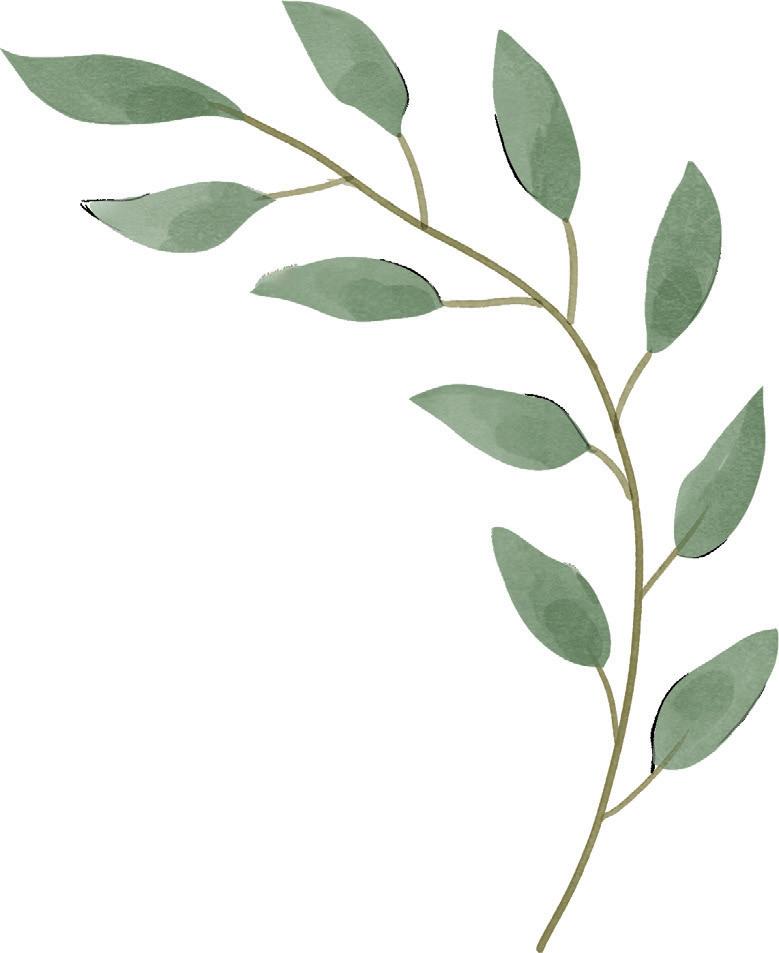





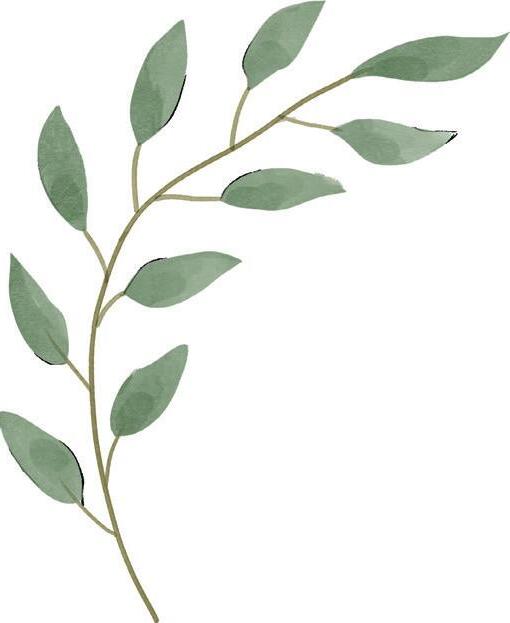
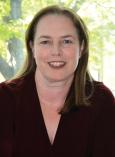

separate,” says Lucy Stramandinoli, co-owner of Neilan Stramandinoli Family Law.
“For parents, their top priority is the kids. Life gets turned upside down and what used to be normal is no longer normal.
“Couples without kids who are going their separate ways still have to grapple with that parting. Often they’ve built a life together and it can be hard to picture the rest of their lives without their partner.”
With a team that has decades of combined experience, Lucy says Neilan Stramandinoli Family Law strives to be a place where people can come to find help.

“Most people want to keep things amicable and stay out of court. We encourage that very much,” she says.
BAKER Deane & Nutt has been operating since 1861, and has offices in Queanbeyan and Canberra, says managing partner Tanya

“We practice in all areas of law including conveyancing, commercial leasing, agreements and contracts, personal injury, criminal law, family law, wills and contested estates,”
“One of the great things about our firm is that we operate in both NSW and the ACT. Our staff are familiar with how things operate in these jurisdictions, which is vital in our local area, where people often live in one jurisdiction and work in another.”
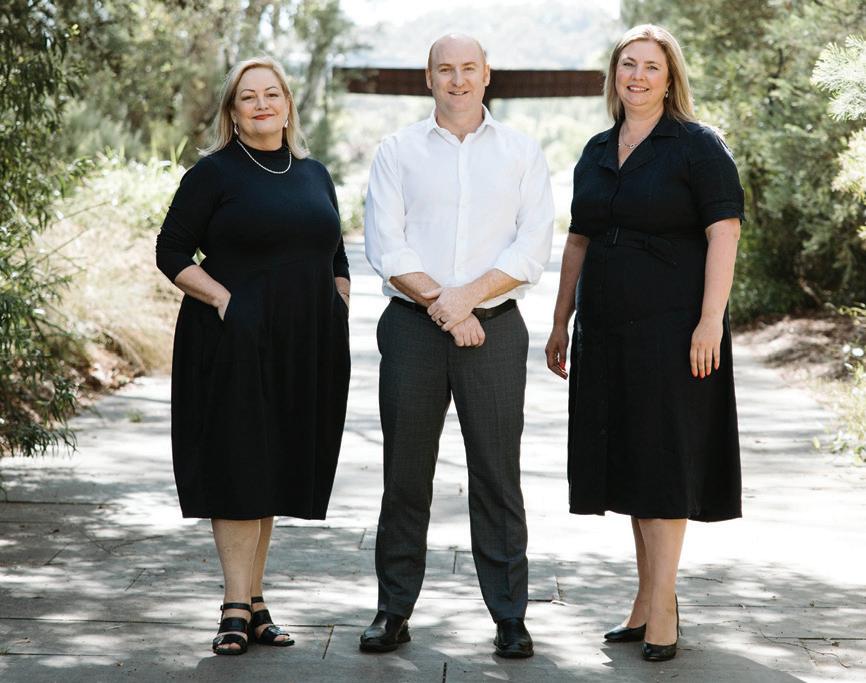
Tanya says Law Week provides Baker Deane & Nutt with a chance to reach out and let people know about their great team of solicitors and support staff, and the skills and experience they are able to offer.
is critical as everyone in the family moves on from the relationship.”
Lucy believes it’s important to establish a connection with clients from the first time they meet.
“That’s why we ask our clients at the first meeting what the most important thing is for them as a goal in the process before they leave the appointment,” she says.
“We keep this in mind throughout the case and we talk about many different ways this can be achieved.”
Neilan Stramandinoli Family Law, suite 2, ground floor, 11 London Circuit, Civic. Visit nsfamilylaw.com.au or call 6152 0493.
Tanya says Baker Deane & Nutt prides itself on being accessible, responsive and innova tive, and has invested in technology, systems and staff training to ensure our clients receive fast and effective legal services.
“My specialty is in family law, and I have over 19 years of legal experience,” she says.
“I love being able to help clients resolve their legal disputes as quickly and as amicably as possible without wasting clients’ time and money by commencing court proceedings.
Baker Deane & Nutt. Visit bdn.com.au. Level 1, 1 Farrell Place, Canberra, call 6230 1999. 260 Crawford Street, Queanbeyan, call 6299 3999.
At Neilan Stramandinoli Family Law, we pride ourselves in our proven track record, our commitment to excellence, and expert knowledge of family law. We understand how difficult and emotional family law matters can be, we are compassionate and empathetic, guiding you towards the best possible solution for you. For separating couples:
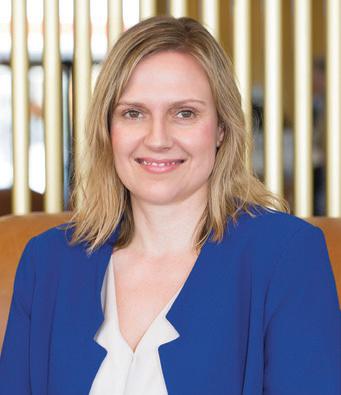
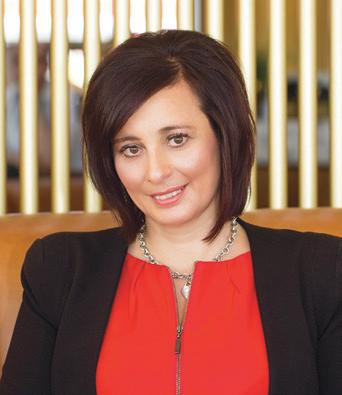


• Parenting arrangements
• Dividing property and superannuation
• Family violence matters
New or existing relationships:
• Best arrangements for your children
• Protecting assets and yourself
• Preserving entitlements
For a fixed fee initial appointment phone us on 02 6152 0493
Email: info@nsfamilylaw.com.au
Suite 2 Ground Floor 11 London Circuit, Canberra City, ACT 2601 nsfamilylaw.com.au
We adhere to Covid 19 community safety measures
 Lucy Stramandinoli Family Lawyer
Anna Neilan Family Lawyer
Lucy Stramandinoli Family Lawyer
Anna Neilan Family Lawyer
“I practice in commercial law and wills and estates, with a focus on estate litigation.
“I have been working in this area for approximately four years. I am particularly passionate about wills and estates because I believe people work hard their entire lives to accumulate wealth and provide for their family.”
Paul says RMB believes in giving back to the community and supports countless charities, sporting clubs and
firms in Australia. Our ‘one office’ approach, means our lawyers see clients no matter where the lawyer/client is based geographically, we will use technology to seamlessly connect you to the best person to speak to about your matter, and our focus on delivering value to clients.

RMB Lawyers, 70 Monaro Street, Queanbeyan. Call 6284 2855, rmblawyers.com.au
“Ken is experienced in all areas of family law, including adoptions,” says Rhonda.
“He is an accredited mediator and has been practicing in Canberra for 40 years.



“He helps people with their legal issues with confidence and compassion.”
Ashilpa joined the team five years ago, says Rhonda, and specialises in wills and estates.

“At the time of your loss, we know you need people who understand the challenges of this time and Ashilpa is known for her empathy,” says Rhonda.
“Daryn joined us four years ago and leads our
his clients.
“The Capon and Hubert team has been operating for many years in Canberra and enjoys working together.

“Many of our clients have been coming to us for a long time and much of our client base comes through referral, which speaks to Capon and Hubert’s success and the confidence their clients and other professionals have in the team.”
Capon and Hubert Lawyers and Mediators, first floor, 32-38 Townshend Street, Phillip. Call 6152 9203 or visit chsol.com.au

LOCATED 10 minutes from the centre of Canberra, the development of Woden Valley began in 1962, before its first residents arrived in 1963.
Separate from Civic, Woden Valley was the ACT’s first satellite city to be built, with its own shopping centre, employment opportunities and suburbs located around the town centre.
More than half a century later, Woden has become one of Canberra’s premier destinations for shopping, community events and recreation.
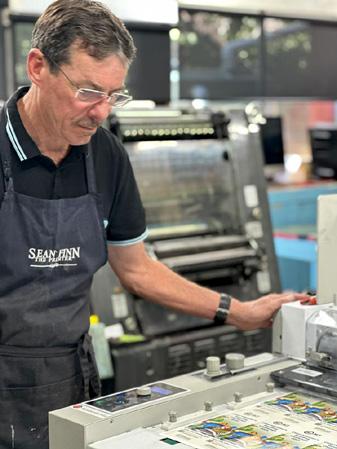


BRINDABELLA Print specialises in books, magazines and educational material, says owner Sean Finn.
“The business has been running for 10 years now, but I’ve been in the industry for more than 40 years,” he says.
“We’re in the high-quality side of printing, so we need to be on the top of our game at all times.
“And there’s only three of us, my eldest son and a graphic designer who are full time.”
Brindabella Print prints books and magazines, brochures, flyers and pamphlets, business cards, labels and stickers and signage.
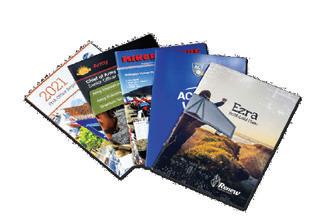
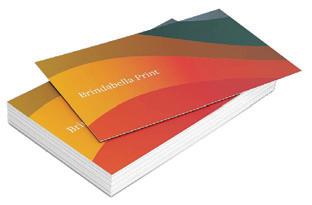
Sean says it’s a great fun job and he loves supporting local teams such as Cricket ACT and Tuggeranong Valley AFL.

“We have the best equipment. We print the year books for Marist and St Francis Xavier, and we print art books and photography books, too,” he says.
“Woden is where we’ve always lived. I’ve had a press there since 1977. Our customers love us. They know I’m always
FOR the past decade, local coffee roasters Niugini Arabica has been bringing singleorigin coffee beans from the Papua New Guinea highlands to the Duffy community, says owner Theo Levantis.
“But, just last week we opened in Curtin, too,” he says.
“We wanted to expand our production capacity and Curtin is a great opportunity, it’s a nice shopfront in a high-traffic area.”
Still located at the Duffy shops, Theo describes it as “a little cafe that focuses on coffee”.
“The only thing that’s important [is] how good the coffee tastes,” he says.
“And, we’ve got verification that ours is good stuff.”
small and elite list of specialty roasts.
“We’ve recently won a medal at the Royal Adelaide Coffee Show, we won bronze for our single-origin latte,” he says.

“It was a great feeling and shows our effort has paid off. The award was for our Femili PNG beans, which supports women and improves responses to family and sexual violence.
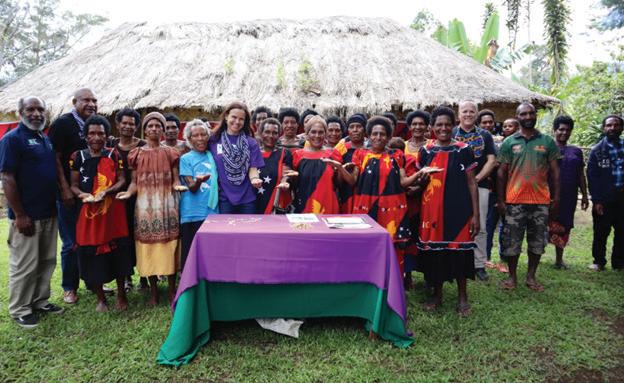
“So, hopefully it results in more sales and more money for the charity.”

And the beans are responsibly sourced, too, says Theo.
“They’re grown by micro businesses and smallholder farmers [who] work for themselves,” he says.
“They’ve got the motivation to make a better-quality product.”
available and they often say we’re the best kept secret in Canberra.”
Brindabella Print, 19 Givens Street, Pearce. Call 1300 886965, or visit brindabellaprint.com.au


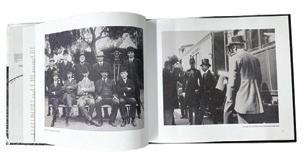
SINCE 1999, Lavender Art Studios (LAS) has been delivering a range of established, progressive weekly art classes to young people, eight years old and over, an adult art program, creative and fun school holiday art workshops for five to 13 years, specialised art workshops, art excursions and high-country art retreats, says co-owner Elita Mackay.
“We invite those interested in the art programs to look over our website, where you will see many examples of students’ extensive artwork and also be able to read further points of interest regarding our very popular art classes,” she says.
“Through experienced art demonstrations and one-on-one support, our highly trained staffing team will support any child or adult on a creative journey to learn art techniques and render successful pictures.
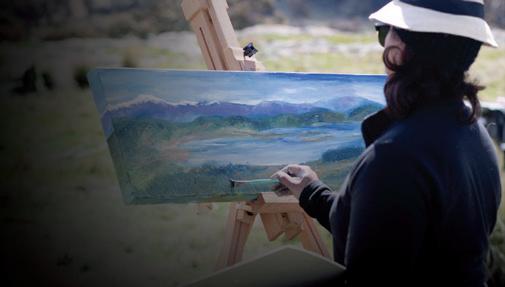
“The art classes are managed and operated by the art studio co-owners; Greg and Elizabeth Mackay, who bring forward immense experience in the area of teaching of visual art, including practiced community service expertise, continually working towards positive artistic outcomes for all who attend Lavender Art Studios.”
Lavender Art Studios, First Floor, 42 Townsend Street, Phillip. Call 0412 649770, or visit lavenderartstudios. com.au or drawandpaint.com.au
OWNER of The Pilates Centre Canberra, Felicia Darbyshire-Pirie says she’s proud that the centre provides pilates sessions that focus on each individual.


“We believe in quality over quantity,” says Felicia, a pilates instructor of more than 15 years.
“Pilates is total body strengthening, conditioning and rebalancing, which is why it’s perfect as rehab. To me it’s a combination of intuition and science that helps people achieve goals.
From two weeks post-spinal surgery all the way through to high-performing, advanced clients, Felica says the centre
welcomes anyone regardless of experience or fitness level.

“A body that is in pain needs time, space and re-education to recover. Each individual’s pain journey is different and therefore we are never comparing one person to another,” she says.
She believes a good instructor is what makes all the difference.
“We only hire really highquality instructors with really good qualifications,” she says.
“At the Pilates Centre we often work with pain specialists such as osteopaths and physiotherapists for client goals.

“I like to say Pilates is the

THE Runners Shop carries a great range of shoes for running, walking or going to the gym, says owner and long-time runner Nick Walshe.
“Having a pair of well cushioned shoes is important – for all types of exercise, but especially for runners,” says Nick.
“This is because runners are often sending a force equivalent to around four times our body weight, which impacts on our knees, feet and lower back.
“Good cushioning in runners helps with injury prevention, especially when increasing your training. Running shoes are also designed to flex in a way that supports the motion of your foot when running – much more so than training shoes or casual shoes. With a team of passionate staff all actively involved in running, Nick says customers can experience first
perfect training partner for everything, especially for life.”
The Pilates Centre Canberra, 58 Colbee Court, Phillip. Call 6162 1793, or visit pilatescentre.com.au

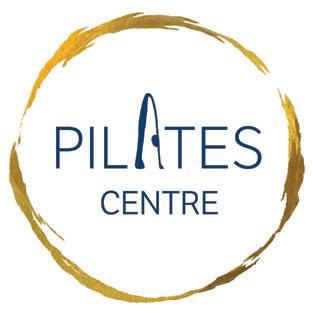
hand knowledge of the products available.

“We take the time to make sure we help customers find the right pair of shoes – suitable for their feet and fitted correctly,” says Nick.
“Our shoe brands include Brooks, Hoka, Saucony, New Balance, Asics, Mizuno, On, Altra and Topo. Nick says running can be incredibly beneficial not just physically, but also mentally. “It’s a great way to relieve stress, and find some balance in our busy lives,” he says.
“Also, with the many running groups and events in Canberra these days, there is a social community side to running as well. And it’s surprisingly addictive!”
The Runners Shop, 76 Dundas Court, Phillip. Call 6285 3508, or visit therunnersshop.com.au
HARTLEY Lifecare is a Canberra based organisation that makes a difference in people’s lives, says CEO Eric Thauvette.
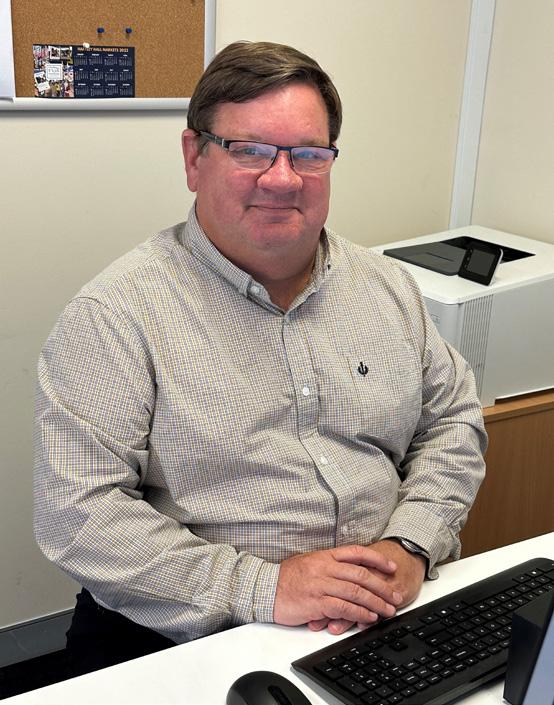
“I’ve been here for 17 years now, and Hartley started in Canberra in 1962. It’s grown a lot through the years but it’s still retained its wonderful atmosphere,” he says.


“There’s a willingness to work, and we’re like a family – real people who look out for each other.”
Hartley Lifecare provides a variety of services for people with disability, their families and carers.

“When Hartley first started it was a group of parents of people with disabilities that came together and supported each other,” says Eric.
“They realised the need was there and they created support groups, and respite care, which gave the parents a chance to have a break and recharge their batteries so that they could continue to provide the proper support.”
Eric says he thinks it’s really important to maintain a connection to the people Hartley Lifecare are supporting.
“We invest a lot in our employees in train ing and support, so that they feel they’ve got all the tools to be able to do their job properly, and we can strive to do our best,” says Eric.
“We have 24 hour care in 35 homes across Canberra. That’s 85 people in supported accommodation, and we support another 20 to 25 people through our respite care.”

Hartley Lifecare, 6 Hodgson Place, Pearce. Call 6282 4411, or visit hartley.org.au
Runners, Joggers, Walkers

Gym enthusiasts of all ages Brands include Asics, Brooks, Nike, New Balance, Mizuno, Saucony, Hoka and On Great range of technical running apparel which breathes (wicks moisture) all year
WITH A DISABILITY TO LIVE POSITIVE AND FULFILLING LIVES?
If you are an enthusiastic, caring, and reliable individual and believe in inclusive opportunities for people of all abilities then Hartley is the place for you.

We have been supporting people with disability to live their best life in the Canberra community since 1962. Hartley Lifecare operates under a person centred, family governance model with a strong focus on active support. We support 83 Canberrans within their own homes and to access the wider community enabling them to live their best lives.
We are an equal opportunity employer who is proud to say that our employees originate from over 50 different countries, bringing with them a vast wealth of knowledge and skills. Hartley is always seeking dedicated and motivated individuals to join our team.
NOW’S the time to get garlic into the ground, with the general tip to plant around Mother’s Day and pull around Father’s Day.
Turn the weed-free soil over to a spade depth and make sure there’s good drainage as garlic cloves (Allium sativum) don’t like root competition. Garlic needs at least six to eight hours of full sun a day through winter. It has a long growing season and doesn’t like to be disturbed during that time.
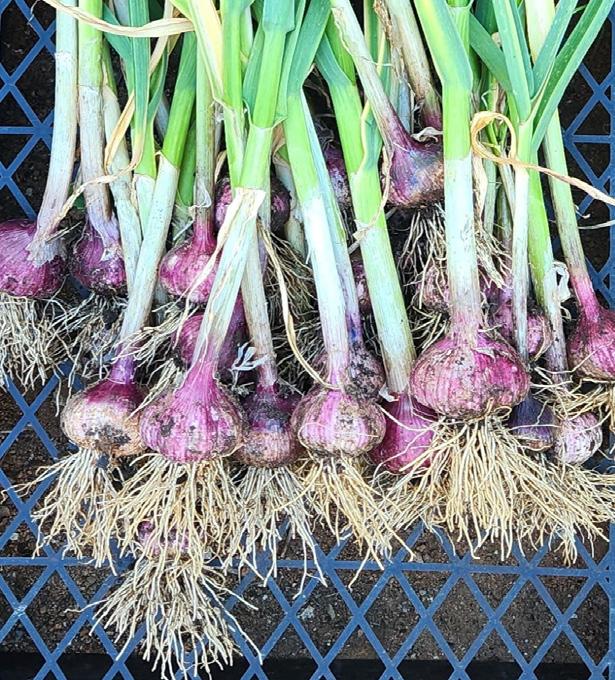
Plant individual cloves, seven to 10 centimetres apart with the pointy end up. I plant garlic in my rose garden because yard space is
insects. It can also repel aphids, weevils and spider mites.

During winter, applying nitrogen-based fertilisers can help increase the bulb size before harvesting in spring.
There are two main types of garlic to grow, and they are either soft neck or hard neck.
Soft-neck varieties have no flowering stems and produce 10-13 cloves per head and store well.

Hard necks produce a stem and centre flower stalk that can be harvested to make pesto and added to salads, stir-fries or preserved in oil.
Removing the stems before the flowers open will push more energy to the final stages of the bulb growing. Harvest a few weeks later when there are at least 8-10 sets of leaves and they have begun to die down.
Garlic needs to cure and dry for
a few weeks before storing and it’s best to dry them out of direct sunlight with lots of airflow. I use an old washing basket and thread the leaves through. The bulbs are separate and dry on the outside of the basket.
A wet winter can cause the bulbs to rot, so protect them from too much rain if needed. I have had the most success with Monaro Purple garlic and last year planted 800gms and my profit yield was 1.5 kilograms, a year’s supply of garlic and enough cloves to replant in the garden.
NOW’S the time to prune or divide any herbaceous perennials to the ground after flowering and give the garden a good tidy up before the big frosts come in the next three months.
Herbaceous plants are identified as plants that don’t have hardwood stems, flowers and grow to their maximum growth in one year. They die back in winter with underground roots still alive and will reshoot in spring.

Most perennial material is suitable for composting or putting through a chipper and this soft material then can be added to the compost pile to break down over winter.

Divide clumping plants using a fork or sharp spade to dig the

entire plant out of the ground and cut up to make smaller plants, place a few plants back into the soil and pot up a few.
Herbaceous plants such as chrysanthemums are a popular Mother’s Day gift. There are new compact, dwarf varieties that only grow to 60 centimetres with longer, showy flowers. My favourite this year is Monza Red, a terrific indoor plant. It flowers for several months and when it’s finished, cut back hard and plant in the garden for flowering next year.
It likes an acid soil and full sun, but protection from the hot afternoon heat. They fill a good space in the autumn garden with their bold splash of colour. jackwar@home.netspeed.com.au
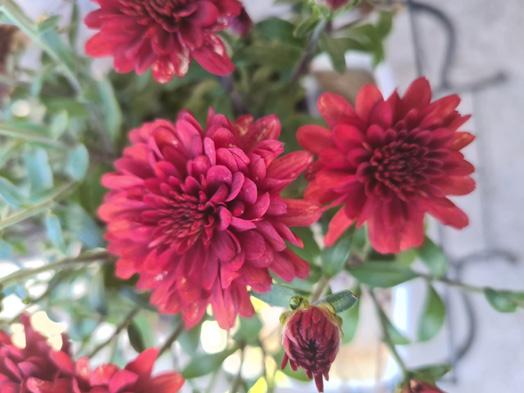

• Plant seedlings of broad beans, Asian greens, leeks and onions.
• Prune grapevines.
• Fertilise lawns.

• Reduce irrigation to garden beds and pots as the weather cools.



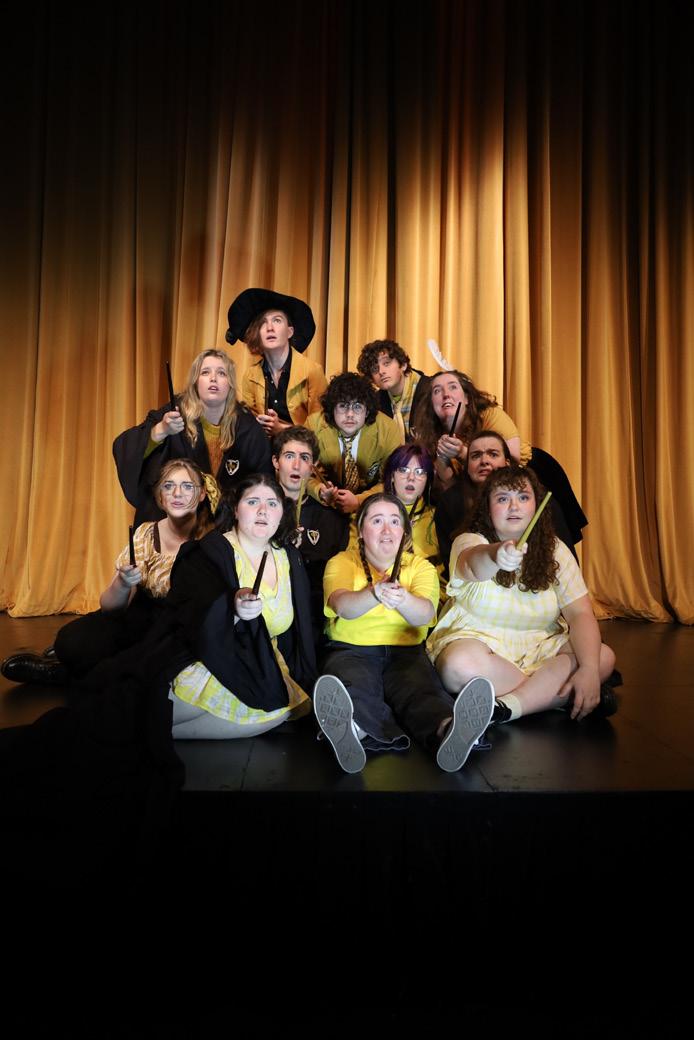 By Helen MUSA
By Helen MUSA
WHEN musical theatre star Geraldine Turner appears at The Playhouse in the 70th Anniversary production of Agatha Christie’s “The Mousetrap”, her character’s reputation as “the seriously unpleasant retired magistrate, Mrs Boyle” will precede her.
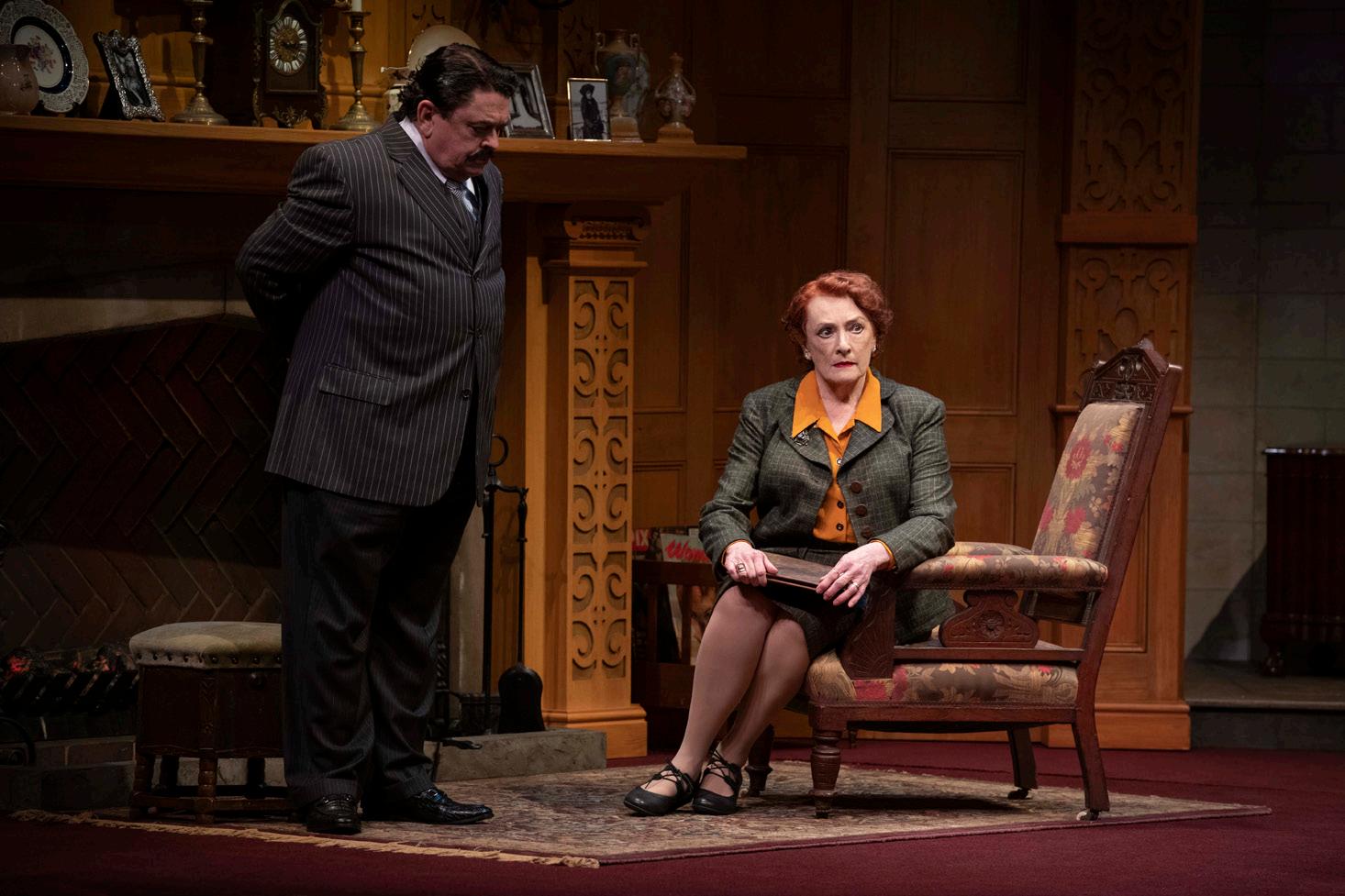
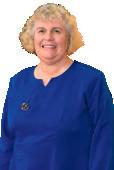
“I would rather describe her as ‘misun derstood’,” Turner tells me, leaping to Mrs Boyle’s defence by phone from His Majesty’s Theatre in Perth, where they’re on tour.

“Yes, she complains a lot about things in Monkswell Manor, but she’s right… everything is relative,” Turner says.
“The Mousetrap” is the longest-running play in the world, with its 28,915th perfor mance having taken place in November 2022. It’s also the longest-running West End show and a “must” on the calendar of tourists to London, seen by nearly 10 million people there.
The show, in which the audience is asked not to reveal “whodunnit” after leaving the theatre, was once confined to London, but


 By Matt Cox
By Matt Cox
ONE of the undisputed cultural treasures of the ACT is QL2 Dance, and the annual showcase by its Quantum Leap Dancers is coming up at The Playhouse.
QL2 has long championed young hoofers and choreographers, while spearheading a movement encouraging boys into dance.
It has also seen countless graduates take the main stages of Australia and produced at least one director of a major dance company, Daniel Riley, of the Australian Dance Theatre.
The 2023 showcase is titled “Communicate” and while dance is notoriously difficult to describe, QL2 director Ruth Osborne and Melbourne choreographer Kyall Shanks are prepared to give it a go.
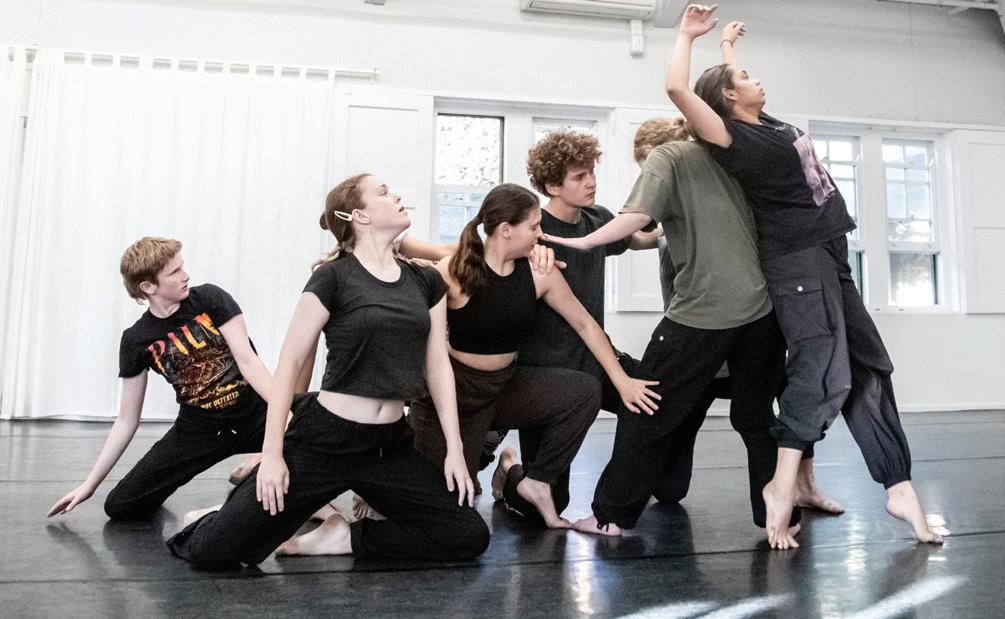
As we discuss rhythm, body memory and the growing ability of young dancers to ask questions, the enduring qualities of commu nication through dance shine out, especially when compared to the spoken word.
“The language of dance holds a special place in this communication world,” says Osborne.
“A language that is felt in the body and soul a lot more than it is understood with the head. A place where emotions and connections are communicated differently, raw and unspoken.”
The challenge is to respond to such ideas in the triple bill format she, as producer, and
her assistant Stephen Gow, have chosen.
As in past years, an original musical score has been created by Canberra’s Adam Ventura, blending the three parts into one with three totally different compositions for each work.

The evening will culminate in a smashing
finale backed by a 10-minute film-scape from QL2’s long-time collaborator Wildbear Productions.
The third segment is being partially rehearsed via Zoom by Lordfai Navinda Pachimsawat, creative director of Bangkok Dance Academy in Thailand. She’ll be
responsible for both the last segment, performed by eight dancers due to arrive from Bangkok just before production week and for the finale, involving the entire ensemble of Quantum Leapers.
However, before hers there are two other segments.
First is a work choreographed by Alice Lee Holland, from Townsville, that focuses on physical listening, through the freedom of improvisation, dealing with hearing and not hearing.
Second is a work created by Kyall Shanks, a dancer-choreographer with a wide-ranging interest in inclusiveness and increasing the accessibility of dance through youth and community work.
A graduate of the Victorian College of the Arts, Shanks was co-artistic director of the 2022 Australian Youth Dance Festival and takes an interest in varying body types and dance for people with all abilities, praising the work of Adelaide’s Restless Dance Theatre, as well as work by Chunky Move and Anna Seymour.
Shanks’ section will be looking at codes, sequencing patterns and physical communication generally. While dancers are known to be very good at counting while learning new works, there’s a bit more to it than that and, like musicians, they can get into the groove without counting every beat.
“There are patterns where bodies are bouncing off each other, shifting against each other in groups, moving in and out… that’s a different way of communication,” she says.
“Language is not the ultimate form of communication. I’m in search of communication… I don’t want people to get stuck. It doesn’t matter what the words are.”
“Communicate”, Quantum Leap dancers, The Playhouse, May 18-20.

THE title of Robert Harling’s famous 1987 play “Steel Magnolias” refers to southern women in the US, who seem to be as delicate as magnolias but actually are tough as steel. Set in Truvy’s Beauty Spot, it’s full of great acting roles, to be taken by Victoria Tyrrell Dixon, Helen McFarlane, Lainie Hart, Janie Lawson, Jess Waterhouse and Katy Larkin in Anne Somes’ revival for Free Rain Theatre. ACT Hub, May 10 (preview) to 20.
A NEW company, A-Z Theatre, is taking up residency at The Street Theatre. “Resident Street” offers annual placements, a stipend of $10,000, space and resources and support from mentors. The chosen company this year is a collaboration between theatre-makers Anna Johnstone and Cathy Petőcz to create a new, youth-focused theatre company producing original works.
CANBERRA Spinners and Weavers’ magnificently-named annual exhibition and sale of members’ works, “Warped and Twisted”, opens in the
 By Basil Thomas
jolly English comedy
By Basil Thomas
jolly English comedy
Fay Skyring Canberra Textile Works Gallery, 70 Maclaurin Crescent, Chifley, 2pm, May 13 until May 20.
MANNING Clark House is hosting an exhibition of photographs by Susan Henderson covering a wide geography from Canberra to New York, Melbourne, Paris and Madrid. The collection is reflective and many shots were taken during the covid lockdowns. At 11 Tasmania Circle, Forrest, May 13-June 8.
“PEACE with Earth – Pathways and Possibilities” is a fundraising event for the Women’s Climate Congress, complete with songs and stories from A Chorus of Women. The guest will be photographer Hilary Wardhaugh, founder and creator of the Everyday Climate Crisis Visual Petition – a call to action in the form of a visual response to the Australian government’s climate-change policies. Terroux Peace Garden, 88 Rochford Road, Wallaroo, 2.30pm-4.30pm, May 13.
NATIONAL Opera will return to the first opera it staged when it was Canberra Opera Workshop, Donizetti’s “The Elixir of Love” (“L’elisir d’amore). Directed by Ylaria Rogers and conducted by Leonard Weiss, it’s at Albert Hall on May 11 and 13.
NETFLIX has well and truly kicked the hornet’s nest this time.
The streaming giant is the subject of outrage after releasing a trailer for its upcoming blockbuster documentary series, “Queen Cleopatra”, in which it was revealed the famous matriarch of Egypt would be portrayed by a black actress.
That’s despite many archaeologists, scholars and historians widely believing she was of Macedonian and Greek heritage, leading scores of people to accuse Netflix of “blackwashing” the project.
“The creative choice to cast a bi-racial actor to play Cleopatra is a nod to the centuries-long conversation about the ruler’s race,” says Netflix in defence of the highly anticipated show.
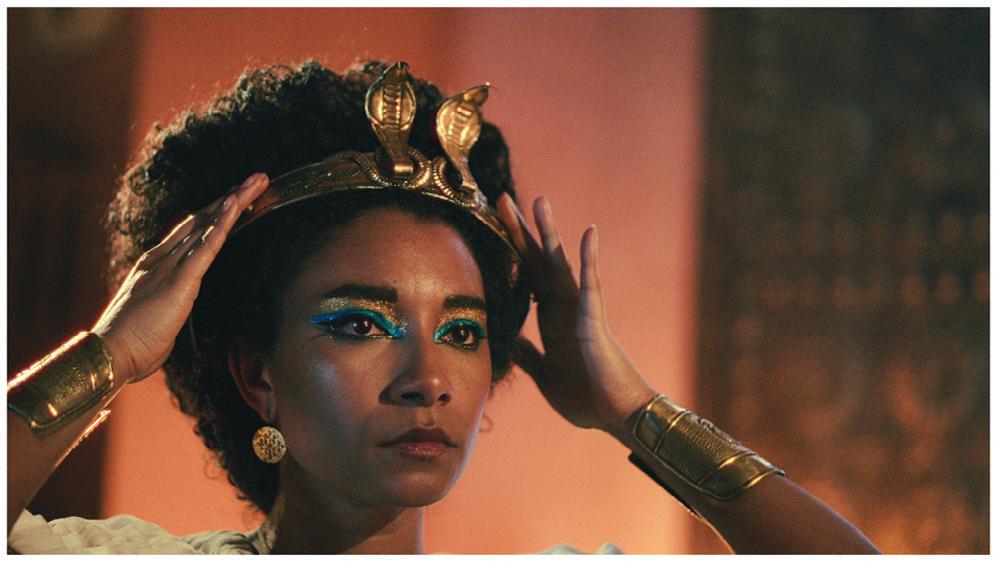
“Our series re-assesses this fascinating part of her story.”

It’s no surprise the company was swift in turning the comments off on the YouTube upload of the trailer, which has already clocked up close to three million views since its debut.
The four-part docudrama, which debuts next week, comes from executive producer Jada Pinkett Smith who says she wanted to be part of the show so that she could represent black women.
But the controversial casting decision may limit just how far the story can reach.
The backlash in Egypt itself has been so intense that many are calling for it to be blocked in the country, some going as far as accusing it of attempting to “erase
For those interested, the famous film can today be streamed on Disney Plus but, be warned, it goes for an absolute bladdertesting four hours.
This whole drama does make one wonder, if Netflix and Pinkett Smith did indeed want to make a show to represent black women, why not choose a historical figure who was definitively of African origin?
For a lot of people, Netflix’s casting choice represents an attempt to inject modern politics into what should be a historically accurate project.
It’s interesting that on the internet movie database (IMDb) the show is listed as a “fictionalised” account of Cleopatra’s rule. Whatever one believes, it is sad that Adele James, the actress playing Cleopatra, has become the subject of a vicious and senseless hate campaign, even receiving hundreds of death threats.

“If you don’t like the casting, don’t watch the show,” she said in response to the backlash.
That, in all this debacle, seems to be the most sensible course of action.
Egyptian identity”.
An online petition on change.org to cancel the series reportedly racked up more than 85,000 signatures before it was taken down.
Some are so enraged they’re even taking legal action against Netflix.
Mahmoud al-Semary, an Egyptian lawyer,
is attempting to sue the streaming company. He not only wants the show blocked in Egypt but Netflix entirely.
So the question at the core of the whole fiasco: Was the famed Pharaoh black?
The uproar has seen a swathe of experts weigh in.

KEIRA Knightley has been announced as the lead star in an upcoming Netflix series called “Black Doves” as the streaming giant unveils its latest new productions.

The British actress, who has been twice nominated for Oscars, will play Helen who is having a “passionate affair” as her secret identity unravels.
The series is set over Christmas, against the backdrop of rising diplomatic tensions, and will see action sequences.
Knightley serves as executive producer alongside “This Is Going To Hurt’s” Jane Featherstone, “Giri/Haji’s” Chris Fry and the creator-writer of the new series Joe Barton, who is known for “The Lazarus Project”.
The 38-year-old actress received Academy Award nods for 2005’s “Pride and Prejudice”, when she played Elizabeth Bennet in the regency period drama comedy, and 2014’s “The Imitation Game”, a biopic about Alan Turing set during World War II.
She is also known for the blockbuster film series “Pirates of the Caribbean”, romantic comedy Christmas movie “Love Actually” and period drama “Atonement”.
Netflix also said Danish Nordic noir novel series “De partment Q”, based on the novels by Jussi Adler-Olsen, is also set to be adapted and set in Edinburgh.
The eight-part series, lead directed by multi-awardwinning Scott Frank, known for Netflix series “The Queen’s Gambit” and superhero film “Logan”, and adapted by thriller “Vigil’s” Chandni Lakhani.
Frank said: “The fact that I have been a fan of Jussi’s novels for a dozen years now combined with my long-standing obsession with old-school British procedurals like ‘Cracker’ and ‘Prime Suspect’ made this one irresistible.
“There are 10 novels in all, each one is a terrific
who has provided affordable loans since 2011 through Burnley Savings and Loans.

“Bank Of Dave: The Sequel” will see Fishwick take on payday lenders and risk his community bank and way of life.
ubiquitously been portrayed as white in film, perhaps the most famous example being Joseph L Mankiewicz’s 1963 epic “Cleopatra”, which starred Elizabeth Taylor as the titular ruler.
18-20 May 2023


The Playhouse Canberra
Bookings 6275 2700 canberratheatrecentre com au
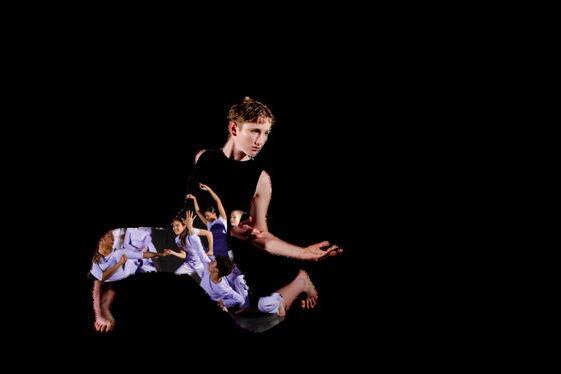

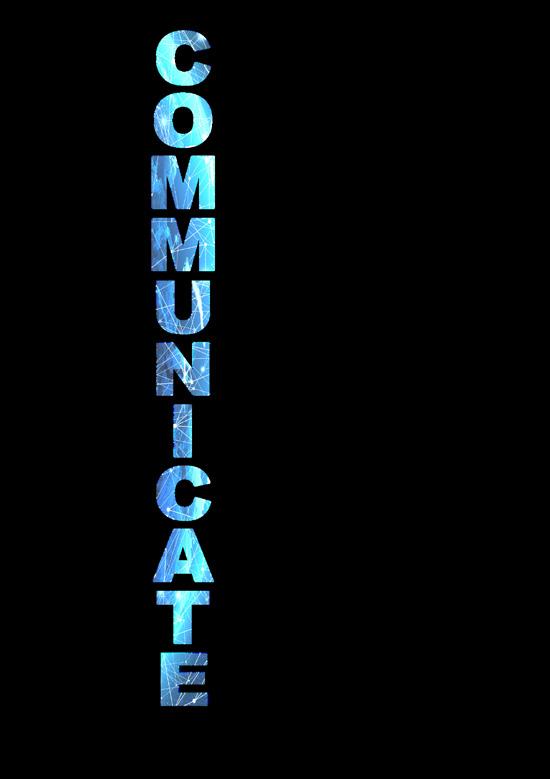
BAR Beirut in Civic is bouncing from award to award, picking up four in 2022 alone. It’s bursting with energy and the bar shakes and stirs with vigour.
The food is bold and punchy – a modern interpretation of where the Middle East meets the Mediterranean. If you’re keen, enjoy the belly dancing and burlesque on Thursday evenings, for some “school-night shenanigans” as Bar Beirut puts it.
The hugely popular Beirut Express was sensational ($22). A twist on a margarita, this cocktail is created with tequila, green chartreuse and lime. Fiery was the chilli-salt rim.
I love dirty martinis, although I don’t order them often since they’re sometimes light on with the “dirty
part” (the olive brine or juice that makes the cocktail cloudy looking). Bar Beirut has mastered this martini. I opted for the vodka version with olives and Bar Beirut lets you name your bottle of alcohol (house pours start at $20).
We agreed, although this is a “cocktail” bar, that the wine list could be beefed up. With whites, for example, only three are on the menu by the glass, and the Viognier, Vermen tino and Chardonnay blend is $25 a glass.
Bar Beirut is cosy and compact in size. The bright pink walls behind the bar are an attention grabber. Selecting a seat near the windows at the front, we watched the world go by in Garema Place.
We were impressed with the menu and could have ordered any dish. Bar Beirut prides itself on its late-night kitchen, taking orders right up to 10pm. Big tick.
Sharing is the way to go, and our dining experience started with impressive kingfish tartare tarted up with mandarin chilli
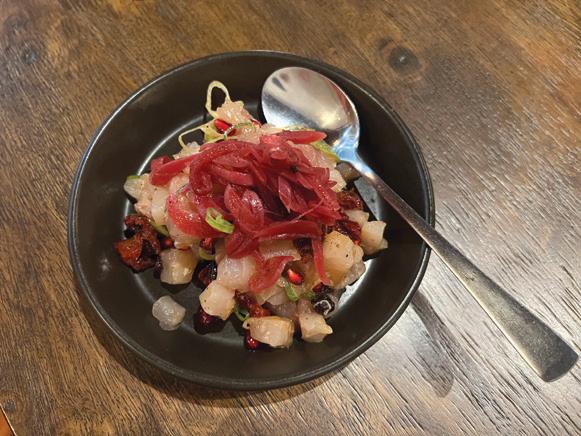
into chunky cubes and the dressing smashed it with flavour.
Smooth and creamy was the white bean hummus ($11). The pool of olive oil in the middle was a stunning, deep green.
A wonderful a la carte dish was the fried cauliflower featuring loads of bhar aswad (black pepper) and smothered with sumac
crème ($16). It’s a testament to Bar Beirut’s passion for packing flavours into food.
The colourful slaw that accompanied the charred chicken was super crunchy and the meat moist and delicious ($18).

Bar Beirut offers two set menus, one a vegetarian option (minimum two people).
While the place wasn’t packed, Bar Beirut was a bit wonky on service. My
dirty martini wasn’t dirty, although it was replaced pronto. We asked for our chicken and cauliflower to come together, but that didn’t happen. And we weren’t given appropriate serving utensils, making life a bit awkward.
While the few service issues surprised us, the pluses made us forgive. As my dining friend proclaimed: “I’d come back in a flash.”
THIS is a story of the best of wines and the worst of wines; here note my literary pretension, the emulation of Charles Dickens’ immortal opening lines of “A Tale of Two Cities”: “It was the best of times, it was the worst of times”. Plus there’s a twist at the end.
But the difference is that these wines were exactly the same: two bottles of 2018 Tertini Southern Highlands Riesling.
A mate and I were exercising and on return from a walk around the bridge-to-bridge portion of our inglorious Lake Burley Griffin (replete that day with a flotilla of floating garbage), we purchased a 2018 Tertini Southern Highlands Riesling because the purported price reduction was from $35 to $18. This seemed to be reflected in the shortage of stock: there were just two bottles available. He purchased one. The outlet is a high-end grocery/mixed business in Barton.
The Tertini was delightful. It was a true cool-climate riesling with lime zest and green apple, a clean freshness that finished well. At below $20 a bottle, this was good value-for-money drinking that complemented the chicken fried rice I supplied as my part of the post exercise repast.
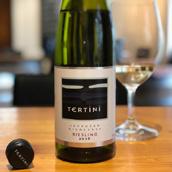
My friend declared that this was: “A successful experiment all round which should be repeated.”
To that end he went back to the Barton outlet a couple of days later and, as the second bottle was still on the shelf, he laid out another $18.
A few days later, he brought around the second bottle of Tertini. We looked forward to another glass or two of this austere but pleasant riesling.
Things started poorly with a loud “pop” as the screw cap was turned. This generally indicates that the seal has broken and per se this doesn’t mean that the wine is spoiled.
But then the sour smell of kerosene and old sack hit the nose and the colour was not a pale straw (as with the first bottle) but a dark yellow.
There was none of the earlier delight; the wine also tasted of petroleum heavy with kerosene, appeared to be oxidised and was undrinkable. The two glasses poured went down the sink.
When my friend went back to the establishment with the remaining two-thirds still in the bottle he was met by outright refusal to make good the purchase. When he told me of this experience, I was first angry, then disappointed.
The issue of bottle-to-bottle variation is rare but can obviously occur when moving the wine from source to retailer; this bottle appeared to suffer from heat stroke or inadvertent damage that knocked the seal and spoiled the libation.
I wanted to get a handle on the attitude of the winery to this issue so I called a number obtained from Linked-In (the company’s website had just a sales email in place and a lovely picture of a vineyard).

I spoke to Craig Moxey, former operations manager at the winery, now retired. Moxey said that the kerosene flavour can be induced by the grapes getting sunburned and that the better riesling the company formerly produced was from its Yaraandoo vineyard and the rieslings from there did have an expected hint, hint only, of kerosene.
But the big news was a shock. He also told me that the winery had closed down and that since January all of its wines had been cleared. The cupboard is now bare. The closure was due to the failure of a farm succession plan.
Moxey said that the closing down was reluctantly undertaken and he wanted me to be clear that the winery, when in operation, stood behind all of its wines and would have done the right thing about my friend’s complaint.
There are more of Richard Calver’s wine columns at citynews.com.au
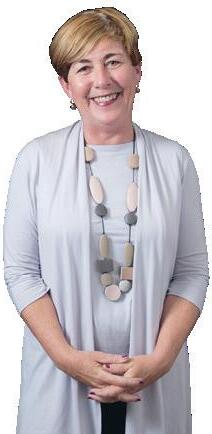


ARIES (Mar 21 – Apr 20)
TAURUS (Apr 21 – May 21)
The Sun and Uranus link up in your sign. So, it’s time to tap into your innate Taurean power and become the strong, smart and sexy Earth Goddess (or god) you were born to be. Draw inspiration from feisty movie icon Katharine Hepburn (who was born on May 12, 1907): “You can’t just be talented: you have to be terribly smart and energetic and focused. Don’t just show up. Transform the work, yourself and everybody around you. Be needed. Be interesting.”
GEMINI (May 22 – June 21)
Expect a rather disruptive week, as Mercury (your patron planet) is still in retrograde mode, and the Sun hooks up with unpredictable Uranus. Make sure your restless mood doesn’t lead to reckless behaviour and a loose tongue. Think twice before you spread secrets and salacious gossip. Passing on unverified hearsay could lead to unexpected consequences. A tablespoon of tact, a dollop of discretion and a pinch of patience will get you through.
CANCER (June 22 – July 23)
Venus and Mars encourage you to put more energy into pursuing your dreams. No side-stepping, Crabs! It’s time to set ambitious goals – and then pursue them with plenty of creativity and drive. But Uranus and retrograde Mercury could increase tension in a relationship within your peer group. Your intuition is switched on big time, as you tune into those around you and uncover some important information. But don’t let a smooth-talker lead you astray.

LEO (July 24 – Aug 23)
This week life is exciting and complicated; partnerships are unpredictable; the rules are constantly changing; and work issues will keep you on your toes. Maybe it’s time to simplify your life, cull some of your commitments or give a fair-weather friend the flick? Look for unconventional and innovative solutions that suit YOU. Be inspired by Hollywood icon (and birthday great) Katharine Hepburn: “If you obey all the rules, you miss all the fun.”
VIRGO (Aug 24 – Sept 23)
Mercury is your ruling planet, and it’s currently retrograde until May 15. On Friday it connects with Saturn, amplifying your perfectionist streak. Which could lead to unwanted stress when you have to deal with mixed messages and confusing communication – and you also discover that perfection is hard to find! So, your motto for the moment is from Spanish painter (and birthday great) Salvador Dali: “Have no fear of perfection… you’ll never reach it.”

LIBRA (Sept 24 – Oct 23)
This week Venus and Mars activate your career zone, so charm, confidence and plenty of chutzpah will take you far along the road to professional success. But remember that Mercury is in retrograde mode (until May 15). So, double-check all messages and appointment times – and read the fine print in all contracts thoroughly. Saturday’s Venus/Saturn trine is super for business plans, long-term relationships and socialising with work colleagues.
SCORPIO (Oct 24 – Nov 22)
Your partnership zone is under stress as the Sun connects with unpredictable Uranus, and Mercury continues retrograding. So, when it comes to relationships (of the romantic and platonic variety) expect the unexpected! Avoid being a stubborn Scorpio. Instead, loosen up, go with the chaotic flow, and keep your negative thoughts to yourself. As Joni Mitchell (a fellow Scorpio) observes: “There are things to confess that enrich the world, and things that need not be said.”
SAGITTARIUS (Nov 23 – Dec 21)
Mercury continues reversing through your daily routine zone. So, a communication problem, a work matter, a health issue or a local community project could cause some sleepless nights. Fear not! The planets are pushing you to dig deep, accept extra responsibilities and take on challenges with plenty of Sagittarian aplomb. A domestic situation also needs to be handled in a sensitive and sensible way, as you do your best to sort things out.
CAPRICORN (Dec 22 – Jan 20)
When it comes to a child, teenager, lover or friend you’re on a mission to correct their mistakes and change their behaviour. But you’ll get a lot further if you criticise less and encourage a lot more. And the greatest realisation this week is that you really can’t change anyone. They can only transform themselves. As birthday great Katharine Hepburn wisely observed: “You learn in life that the only person you can really correct and change is yourself.”
AQUARIUS (Jan 21 – Feb 19)
You’ll feel restless this week and the danger is you’ll go overboard and throw the baby out with the bathwater. Uranus imbues you with a sense of urgency, but self-discipline and gradual modifications are what’s required at the moment. It’s also important to strive to get the balance right between your personal and professional lives. Be inspired by birthday great, actress Cate Blanchett: “I live my life parallel with my work, and they are both equally important.”
PISCES (Feb 20 – Mar 20)
Creative and innovative communication is the secret to a successful week. But resist the urge to launch half-baked projects and jump to hasty conclusions. Listen closely to what others are telling you, otherwise you’ll misunderstand their motives. And be careful what you post online, as a controversial comment could lead to unexpected consequences. On Saturday, Saturn (in your sign) makes a magical link with Venus, which could precipitate a karmic connection.
Copyright Joanne Madeline Moore 2023
Yoga & Meditation Classes

Private Yoga Classes
Personalised Coaching Packages
Enrolments Now Open For Term 2
All classes include postures, breathing and deep relaxation practices

Relax, recharge, build strength & flexibility, cultivate greater self-awareness
Book online at www.yogaontheridge.com.au

Call Katherine 0409 972 620
1 Name a German composer 1833-97, Johannes ... (6)
8 Which ruler was a patron of Columbus? (8)
9 What, colloquially, is a radio operator known as? (6)
10 Which form of education lies beyond the secondary stage? (8)
11 Name Australia’s floral emblem. (6)
12 Name the monetary unit of the Republic of South Africa. (4)
13 To vote for someone, is to do what? (5)
16 Who explored the Blue Mountains and Bathurst districts in the early 1800s, George ...? (5)
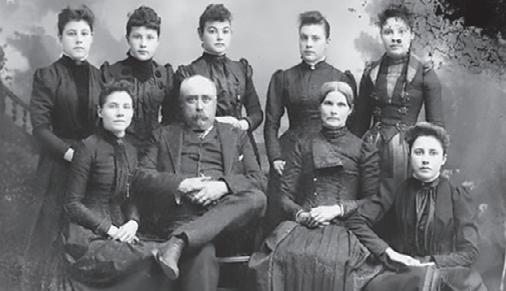
19 Name a less common term for water. (4)
21 Name the French impressionist painter 1841- 1919, Pierre ... (6)
22 What is a landing place for helicopters? (8)
23 Name an earlier English popular singer and comic actor, Gracie ... (6)
24 Which seaport on the island of Oahu is the capital of Hawaii? (8)
Restorations - Repairs - Remakes - Re-Setting Ring Re-sizing - 48hr Service
25 Which term describes that which is the most up-to-date? (6) Down
2 Name one of the archangels. (7)
3 Who maintains religious opinions contrary to those accepted by his or her church. (7)
4 What is a registered nurse called? (6)
5 Name the reflux of the tide. (3,4)
6 What is lucerne also known as? (7)
7 Name a tall aquatic plant of the sedge family of the Nile valley. (7)
13 Which fractions are half of quarters? (7)
14 In which country is Scotland Yard? (7)
15 What is an immature form of a frog? (7)
17 With which name did Van Gogh sign his paintings? (7)
18 Which water-nymphs are fabled to preside over streams and springs? (7)
20 To be crafty or cunning, is to be what? (6)
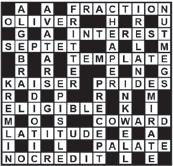
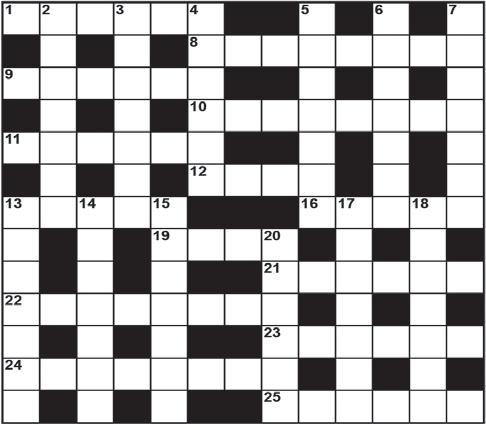 Sudoku medium No. 340
Sudoku medium No. 340


Custom Design - for something Special Pearl and Bead Re-Threading and Knotting
A Family Business: 55 years experience Southlands Shopping Centre – Mawson
10am to 4pm
Open: Tues, Wed, Thurs, Fri. 0408 310 063
Solutions
OPEN 7 DAYS • 6293 4677 songland.com.au Cooleman Court, Weston Creek





Not all artists and tattoo shops are created equal. Here at Canberra Ink we offer a clean and comfortable haven, in great company during your visit. Hygiene and sterilization is of the upmost importance to us and we only operate single use disposable equipment ensuring safety and upholding the highest quality code of practice for skin penetration procedures. We provide professional guidance and care with a combined skill set and years of experience that surpass the standards set in this Capital. Making every tattoo count whether big or small we invite variety and individual creativity with the drive to form Canberra Ink into a Legacy.

| Phone - 0455 899 766

|
